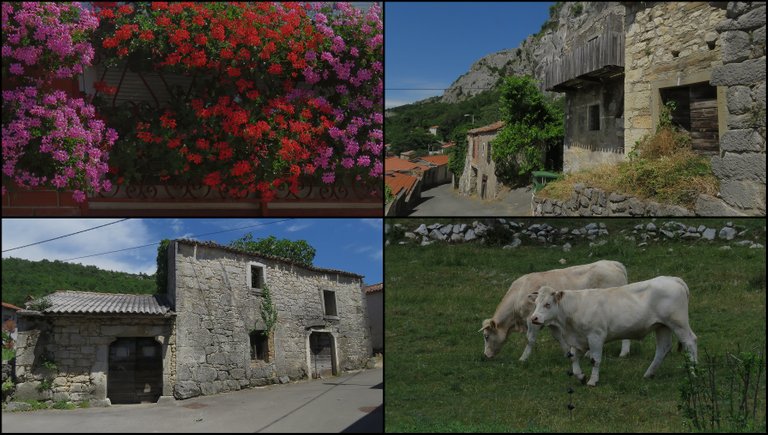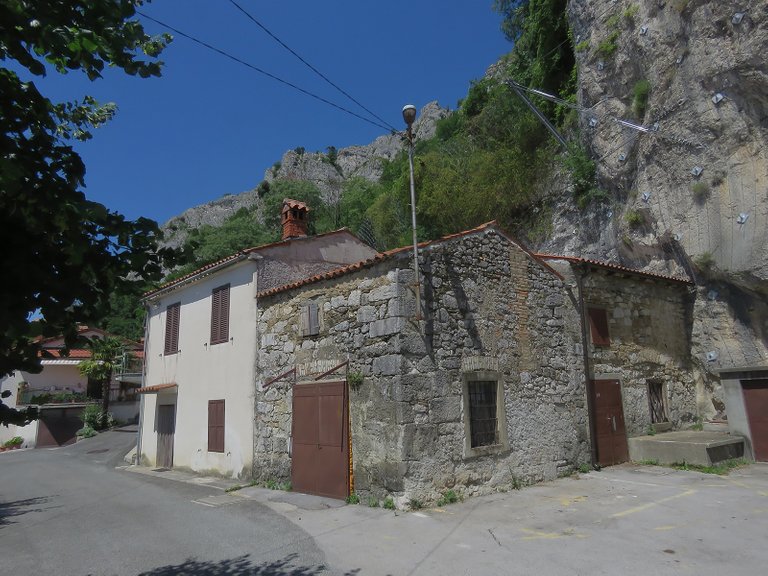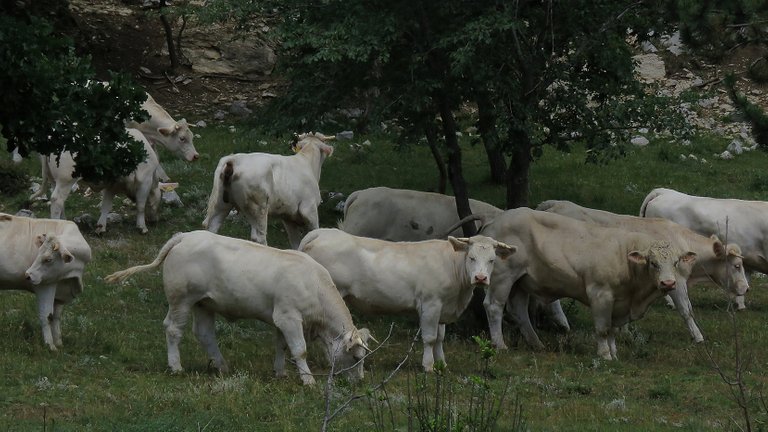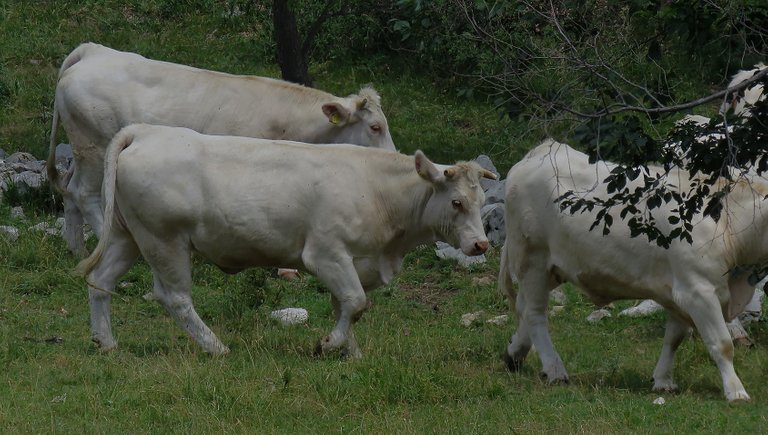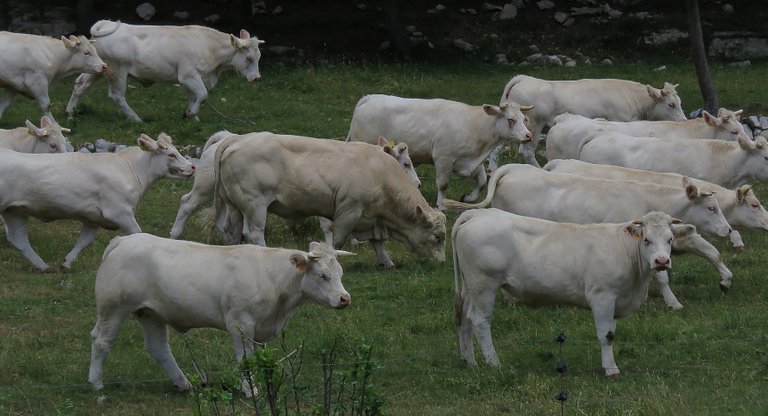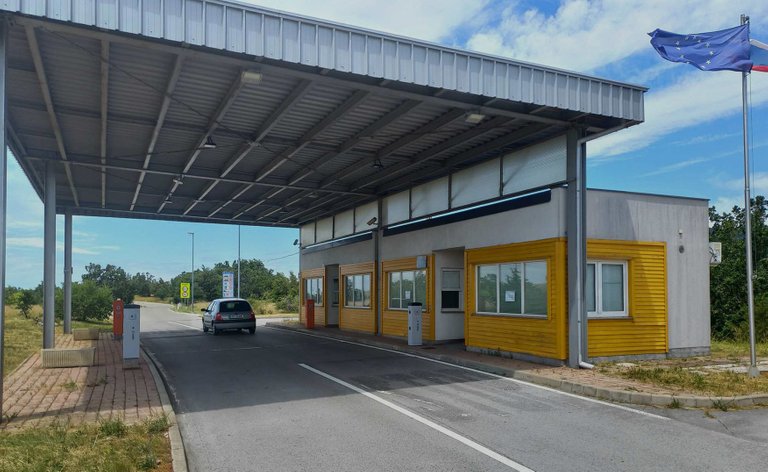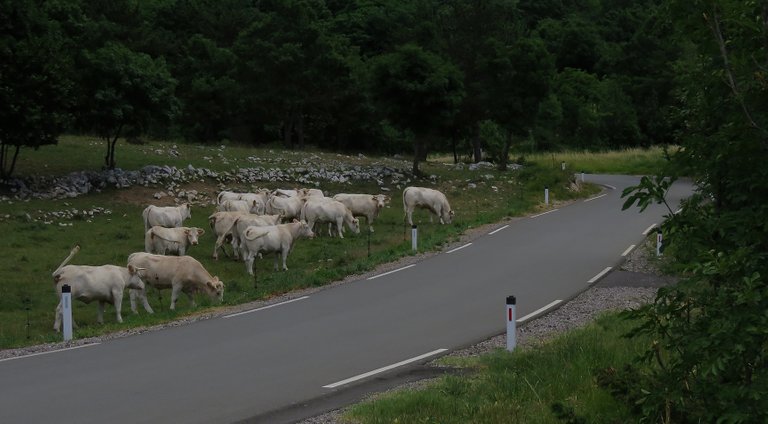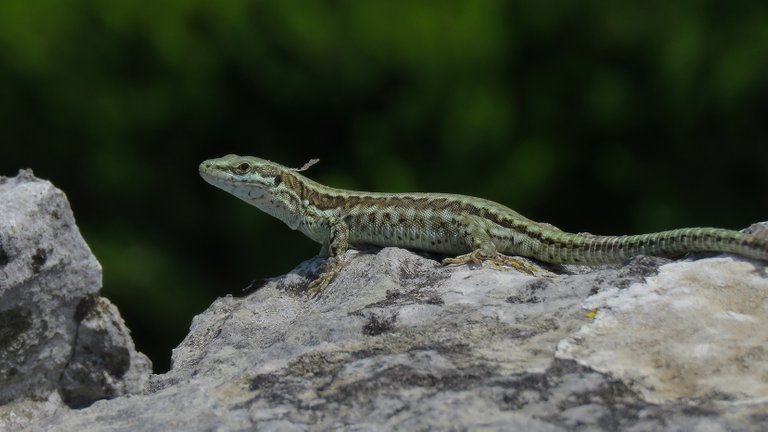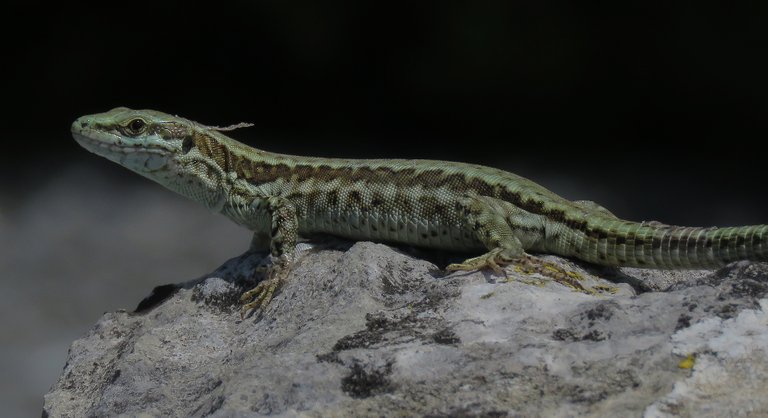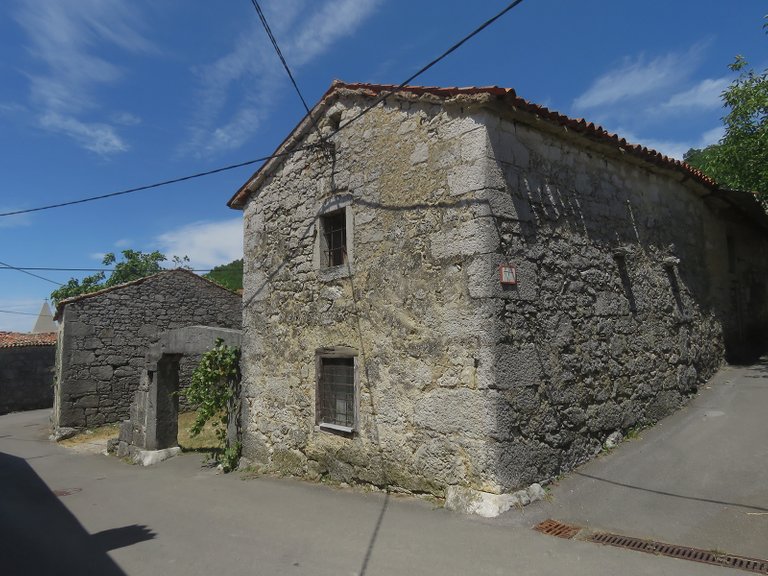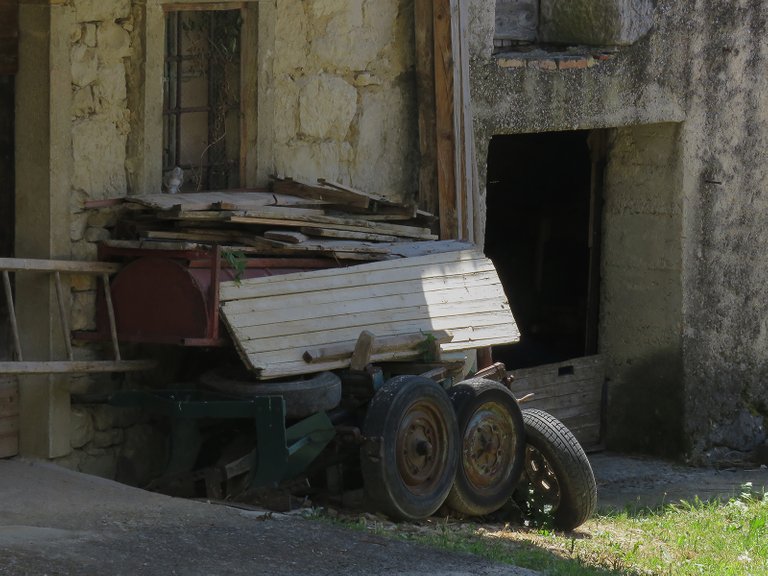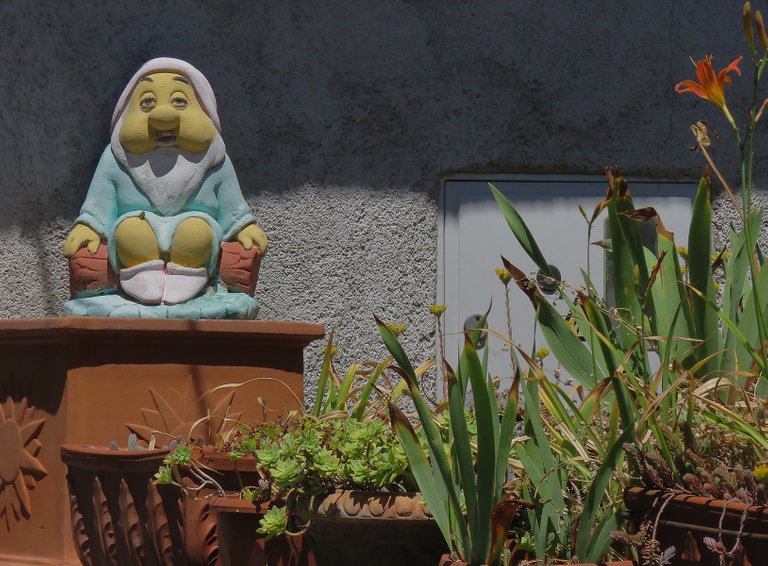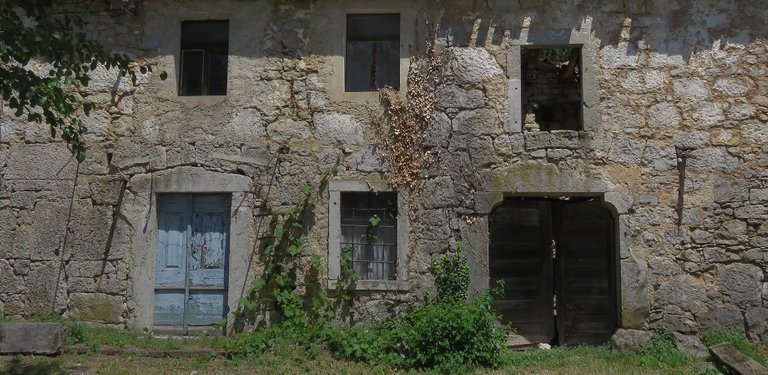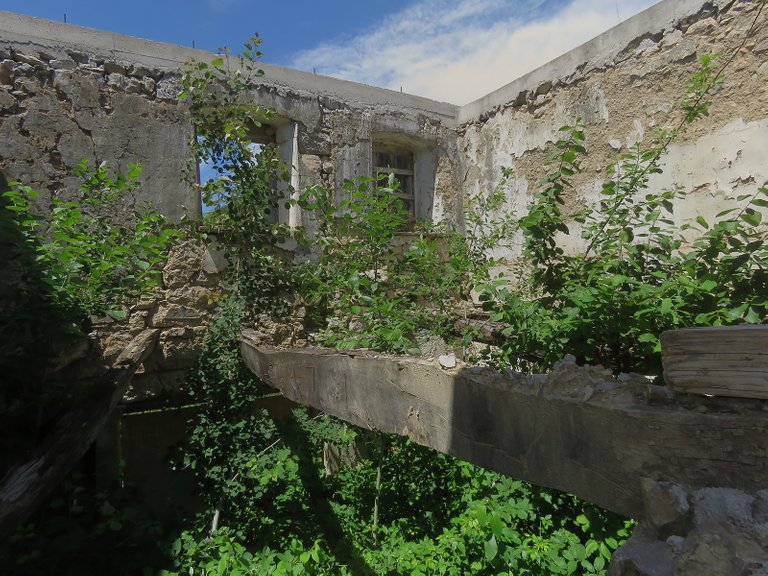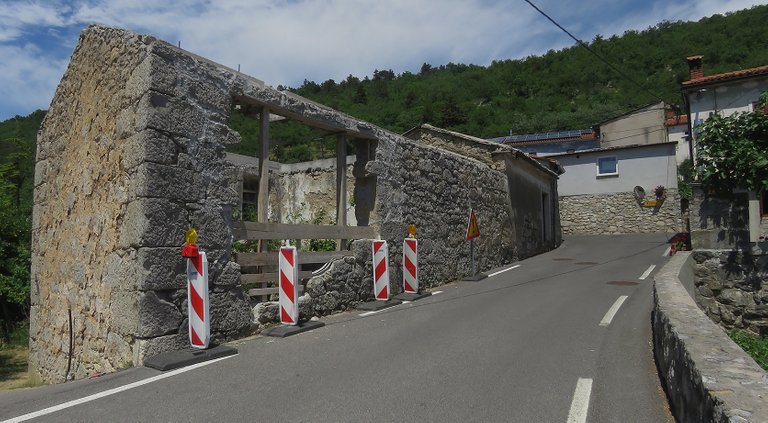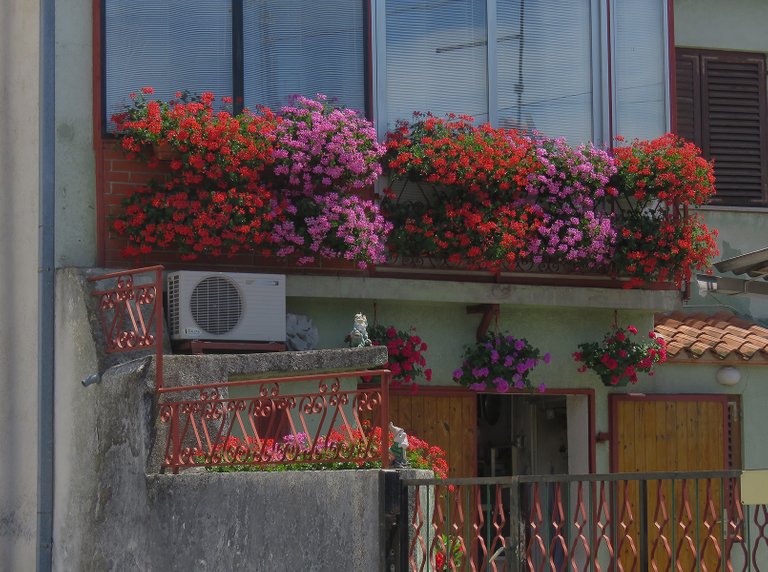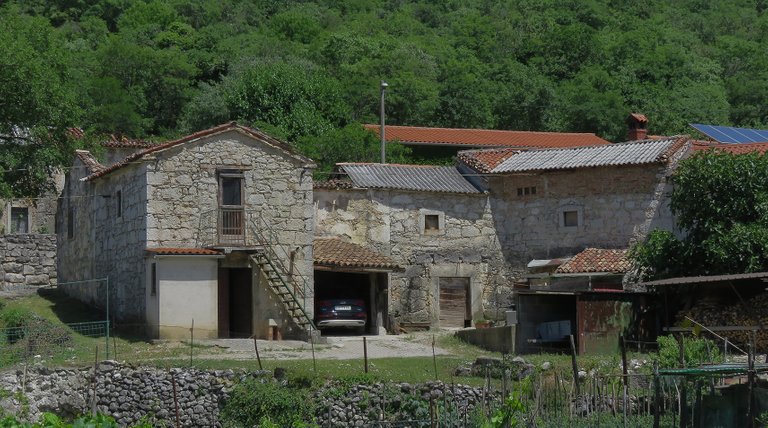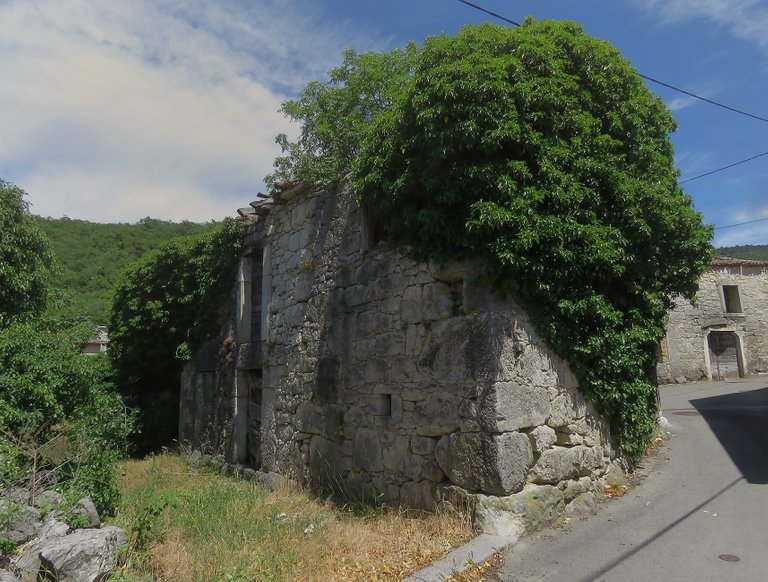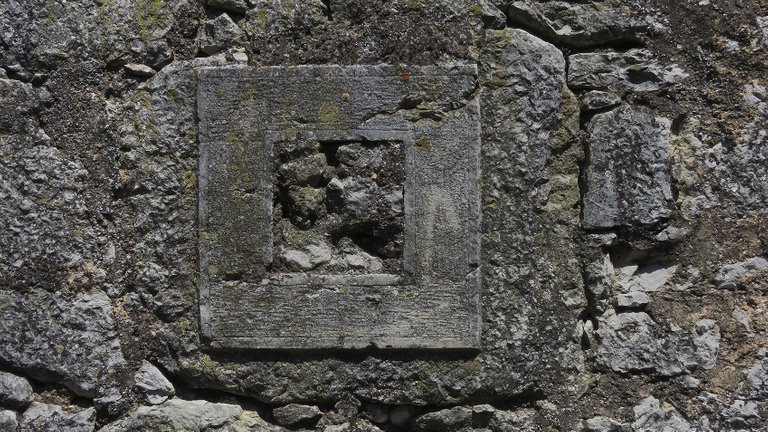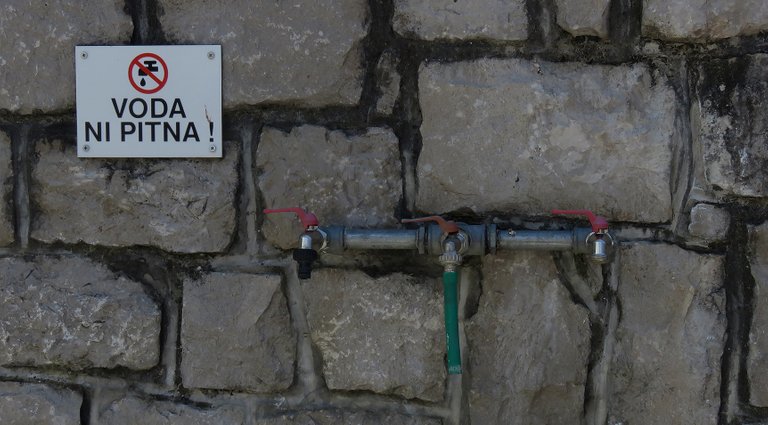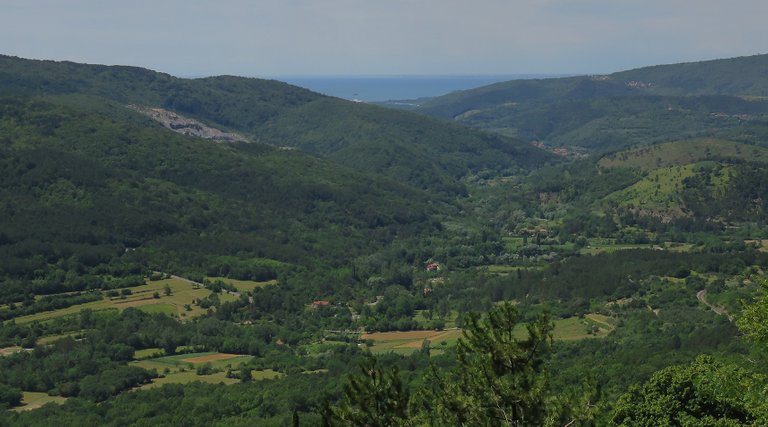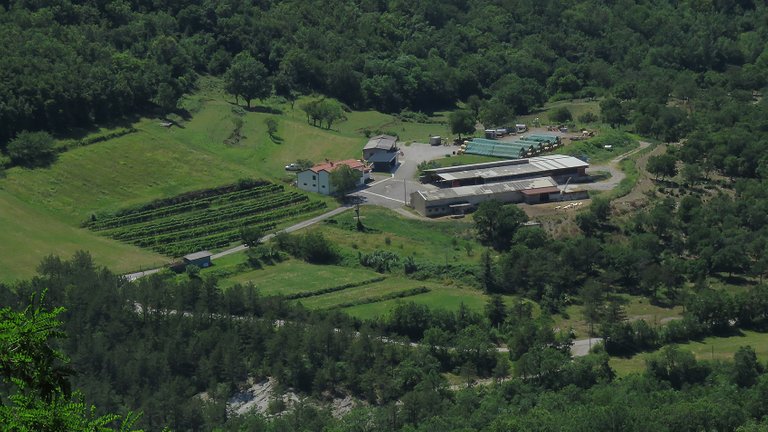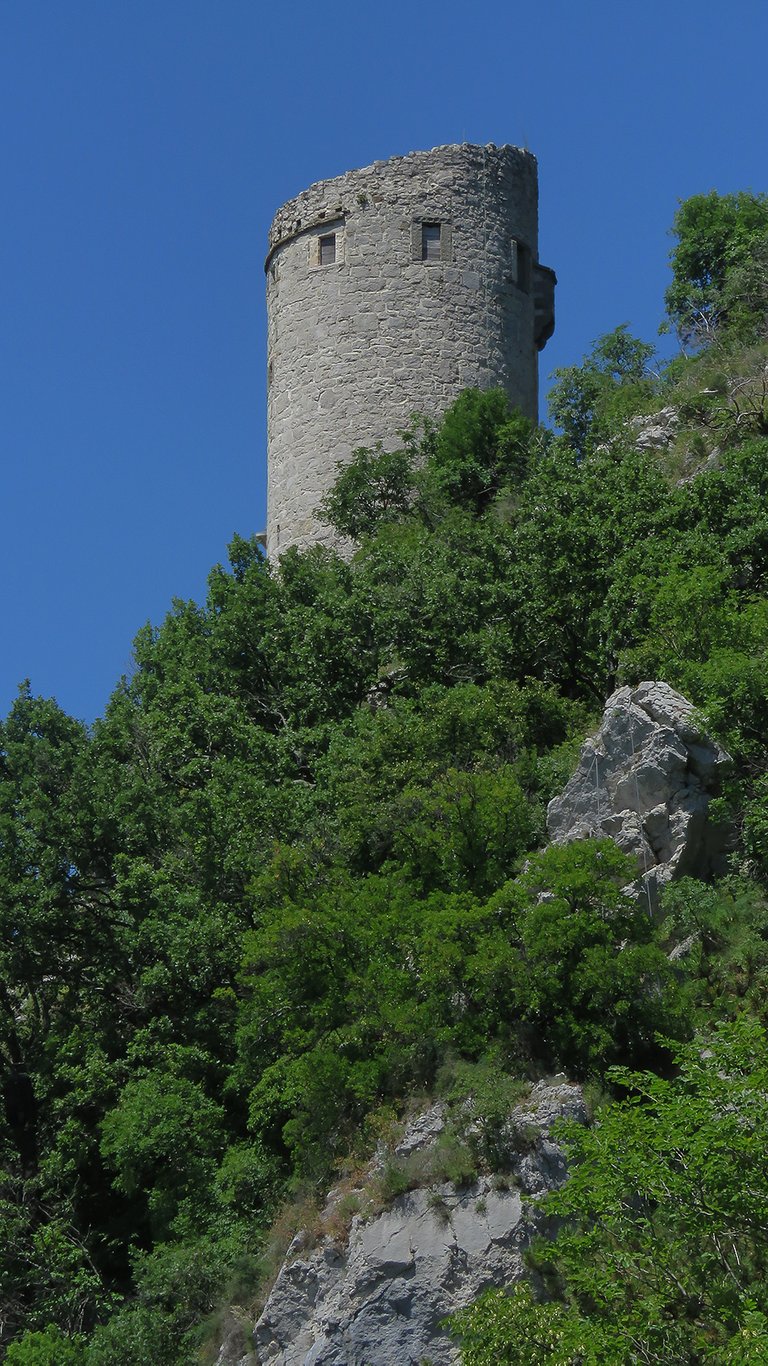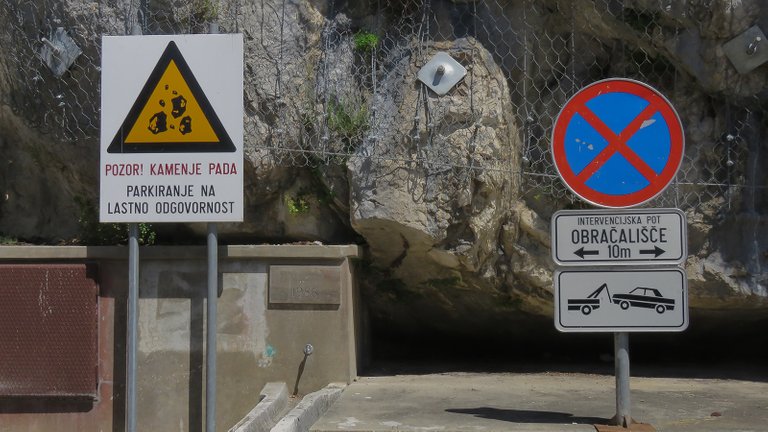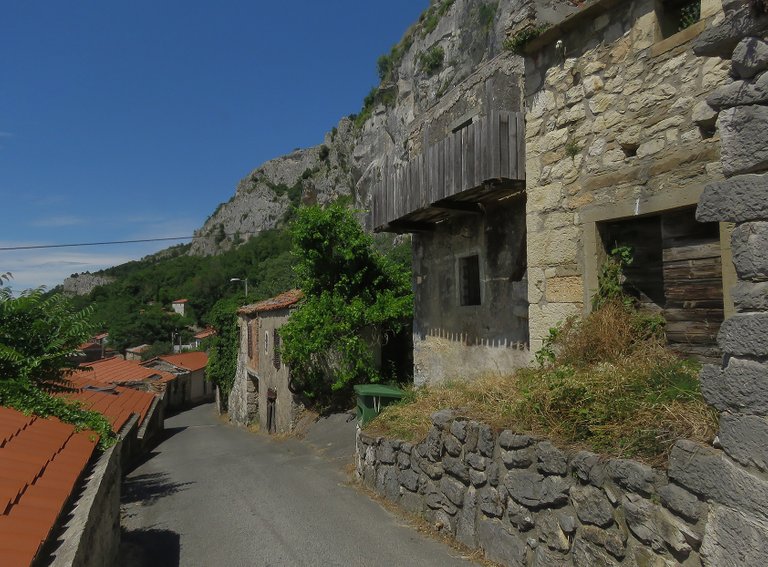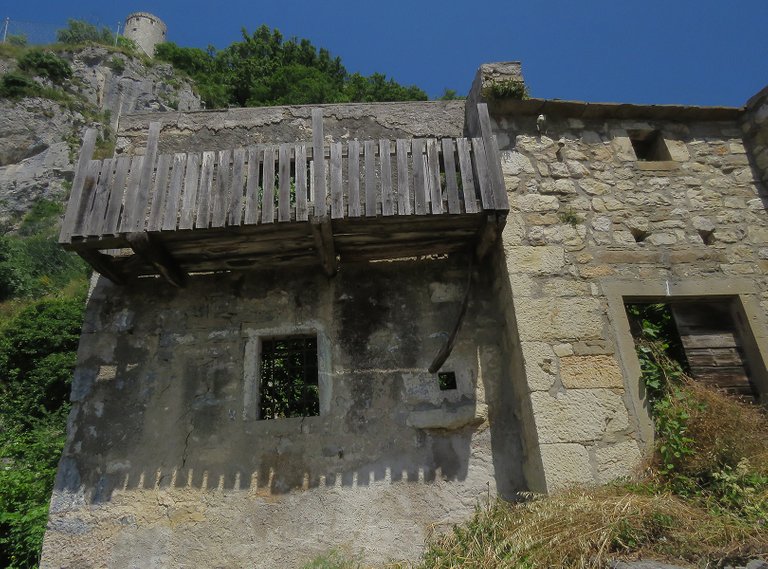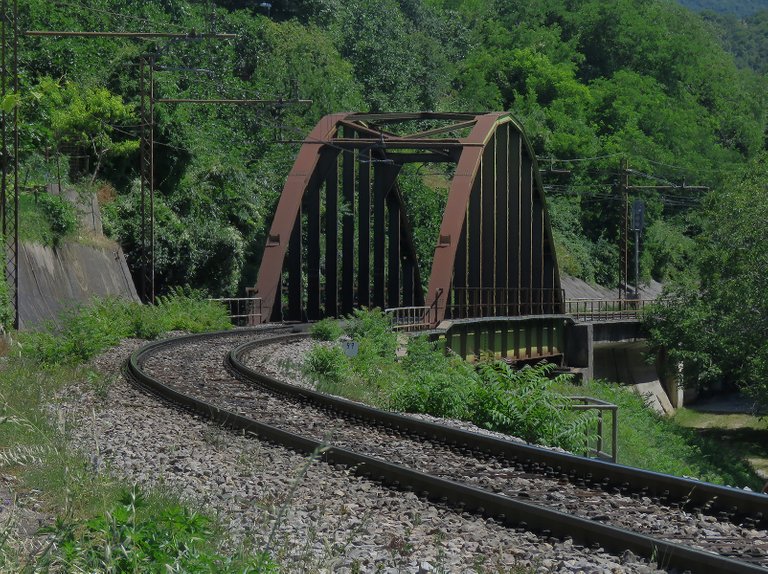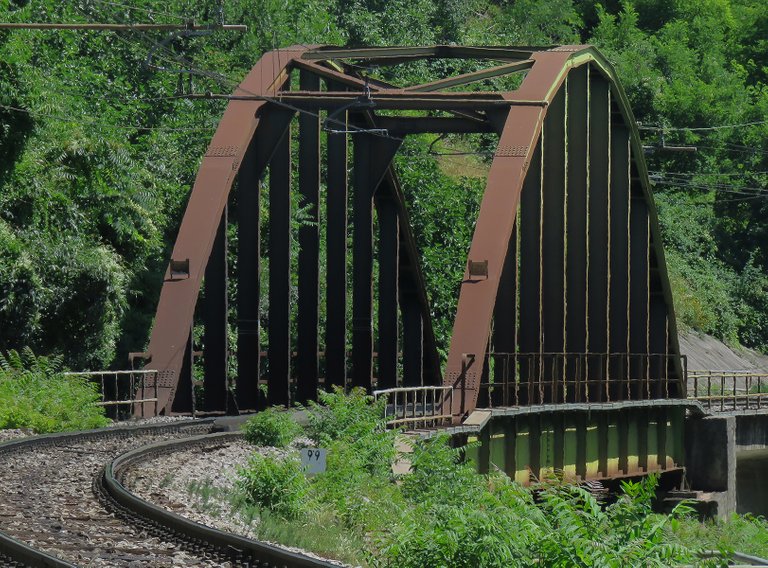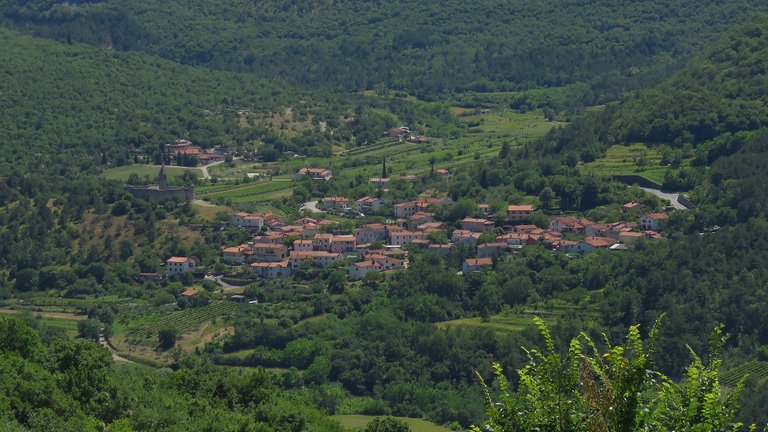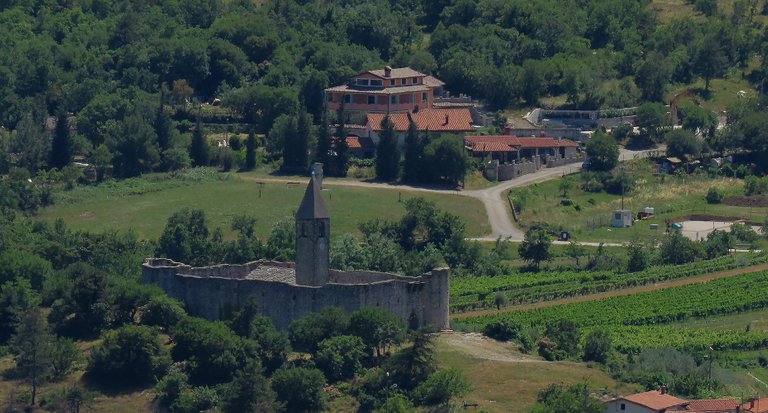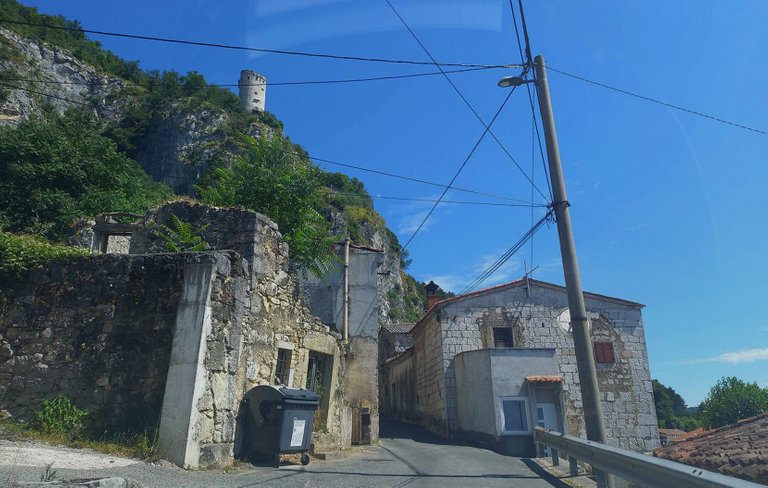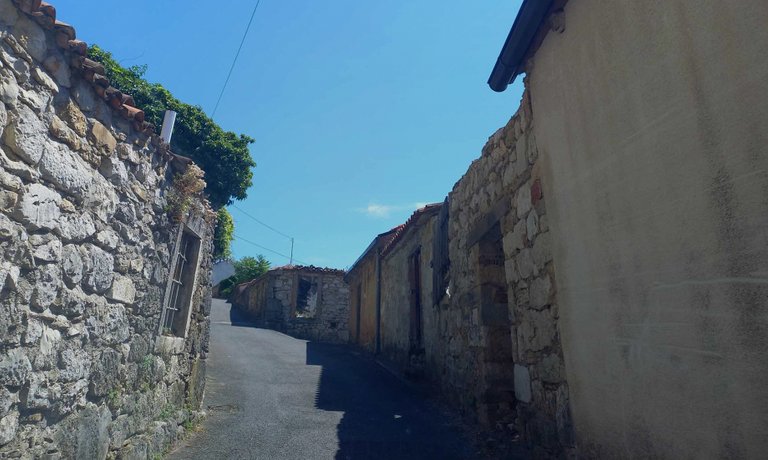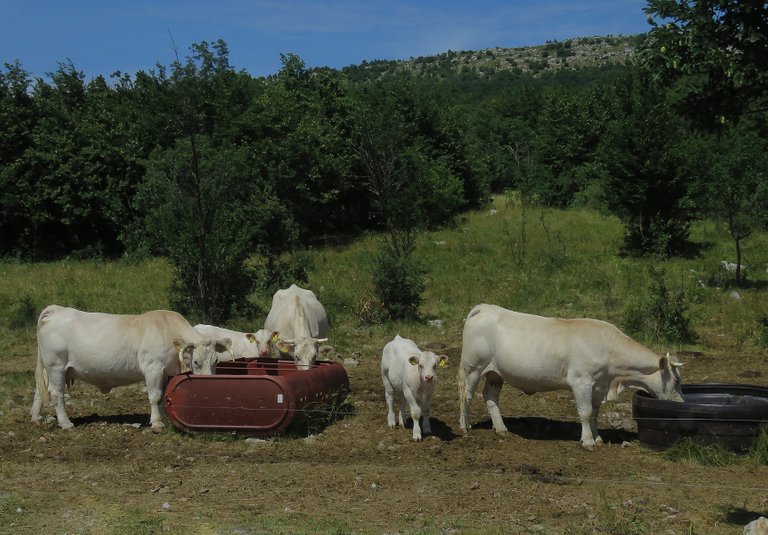A week ago, I drove about a hundred kilometers north of my hometown and visited two small villages in the Slovenian part of Istra.
I mean, I visited two small villages and the rural area around & between them, not just those villages.
The first one, closer to the border is called Zazid. You can see some of its old stone architecture in this photograph.
The second village you'll visit with me in today's post is called Podpech, and in this shot, you can see two of its houses built beneath the rocks of the Chicharia mountains.

I found many photogenic details in both villages. Here, for example, you can see a garden gnome on one of the garden walls in Zazid, while in the following photograph ...
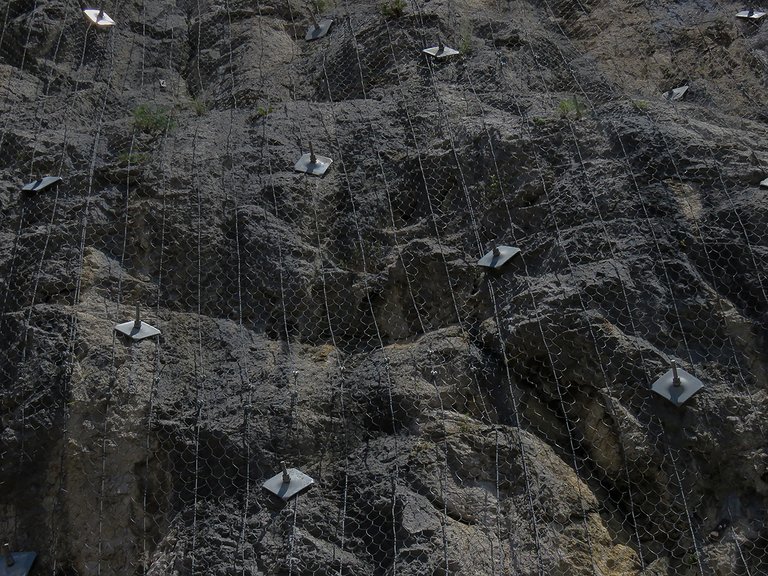
... you can take a look at the net that keeps at bay the effects of the erosion in Podpech.
Here you can see some houses and a line of grape vines in Zazid.
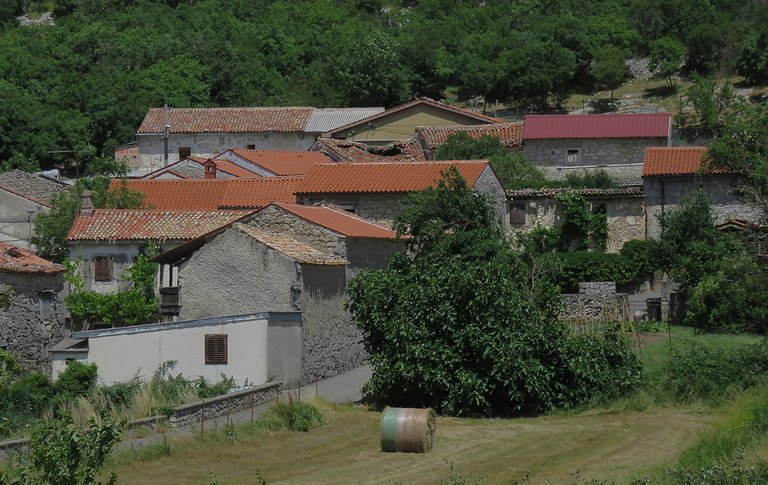
Zazid was the first village I visited on that occasion, but before reaching the small settlement immersed in the green ...
... I stopped to photograph a group of cows ...
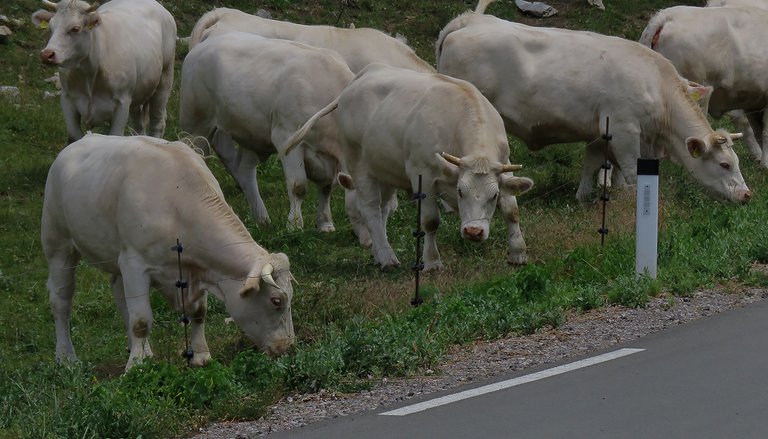
... by the side of the road.
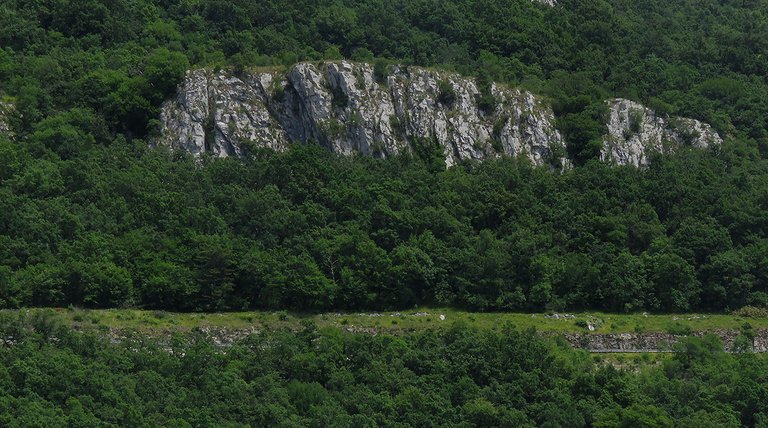
In this shot, you can take a look at the rocks surrounded by forest ...
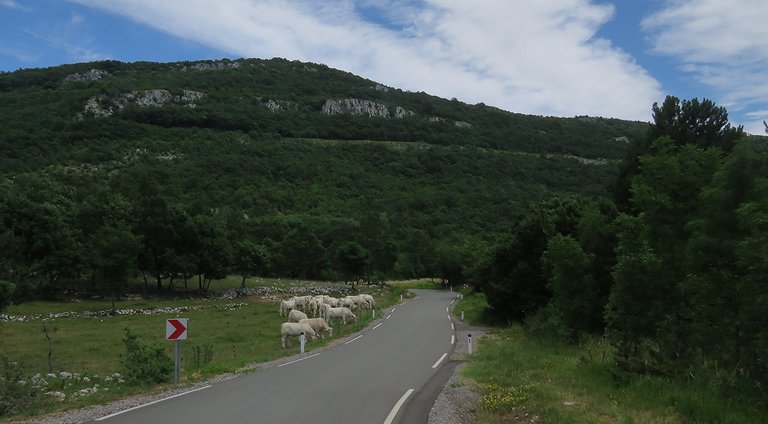
... on the hill further down the road.
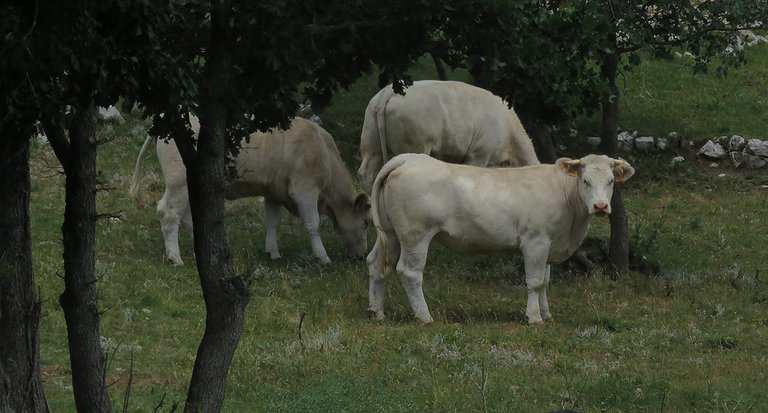
At first, only three cows were grazing in the grove near the road.
While I was photographing that trio ...
... more cows appeared from somewhere deeper in the grove.
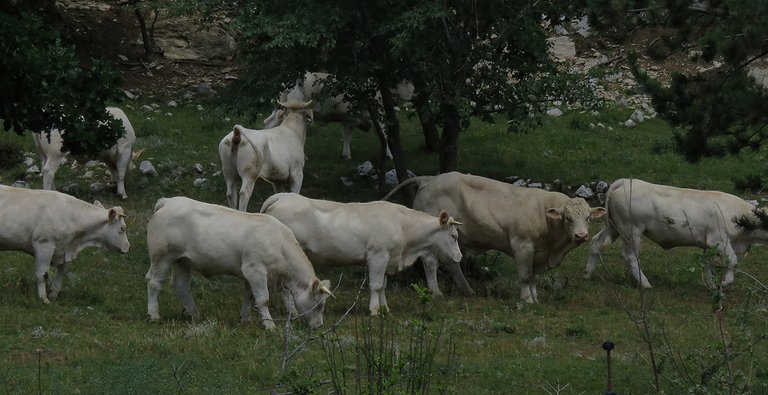
I continued taking pictures ...
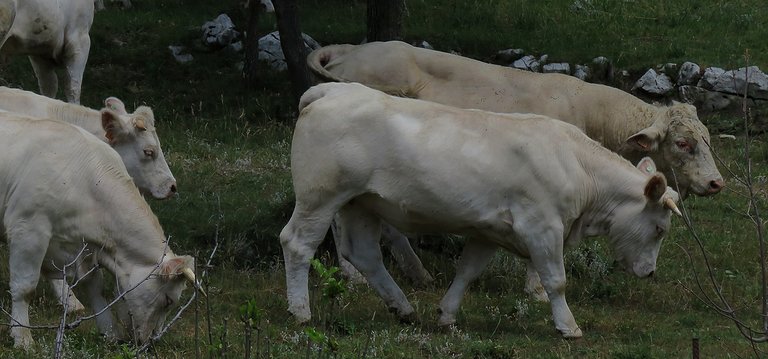
... as they were slowly walking ...
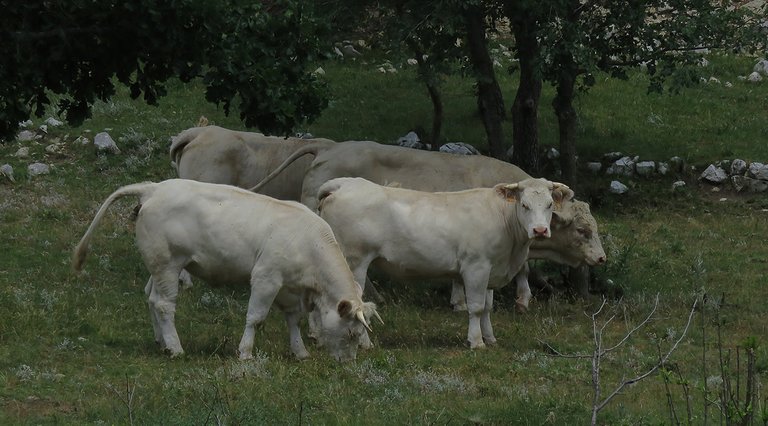
... and grazing ...

... directed toward the road.

Twenty minutes before encountering the cows ...
... I was at the border.

A friend was also there with me. I mean, she was with me the whole time. In the following photograph ...

... you can see her walking around Zazid.
On the 1st of January Croatia joined the Schengen area, so the border is open now. There's no one to stop you, and the border inspection booths look like an exhibit in some kind of open-air museum that deals with the relics of the recent past.

The terrain around the open passage is still heavily fenced but you can enter.
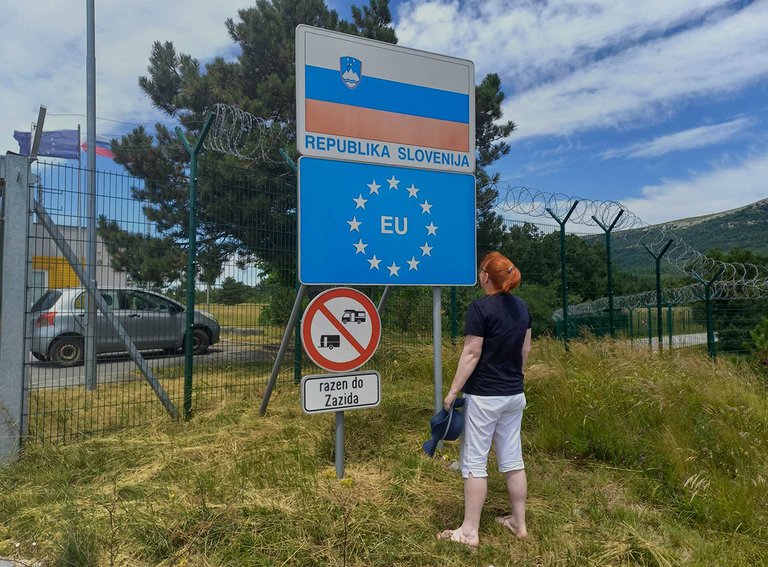
The pretty tall fence decorated with ugly barbed wire was built, among controversies, a few years ago in the middle of the European migration crisis. This relic of recent history was a very short-lived one. I took the following shot ...
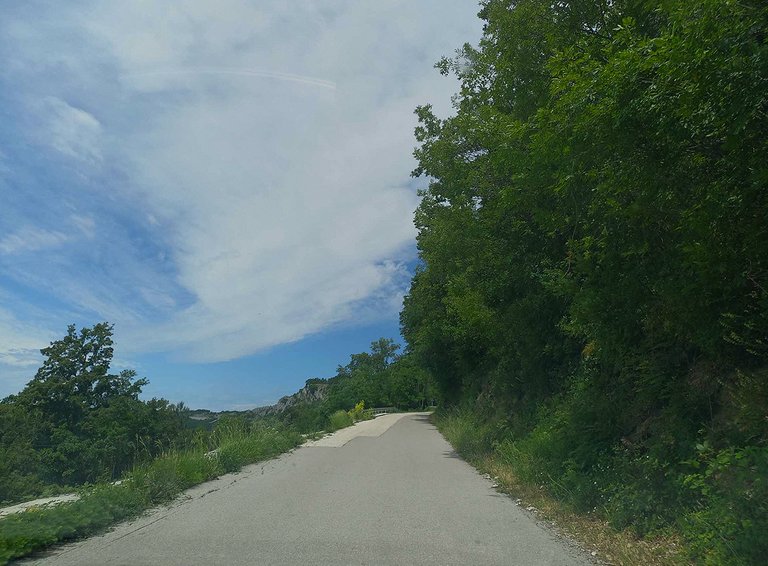
... ten minutes earlier, while driving up the road on the Croatian side of Chicharia.
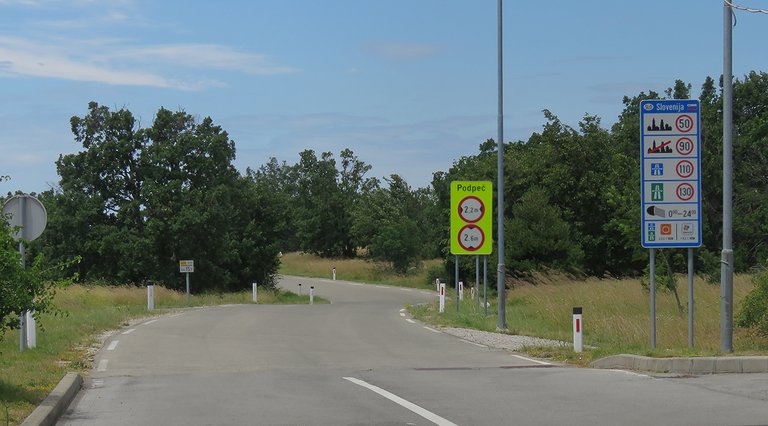
This photograph was also taken from the car. But at the border. I was ready to follow the road ...
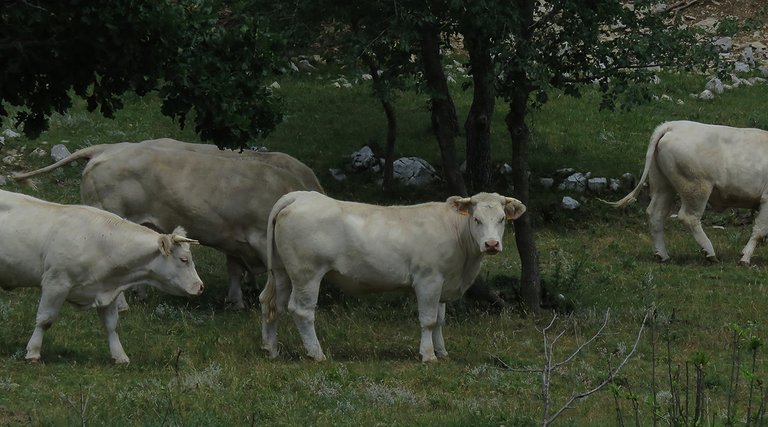
... that will soon take me to the cows ...
... and further.
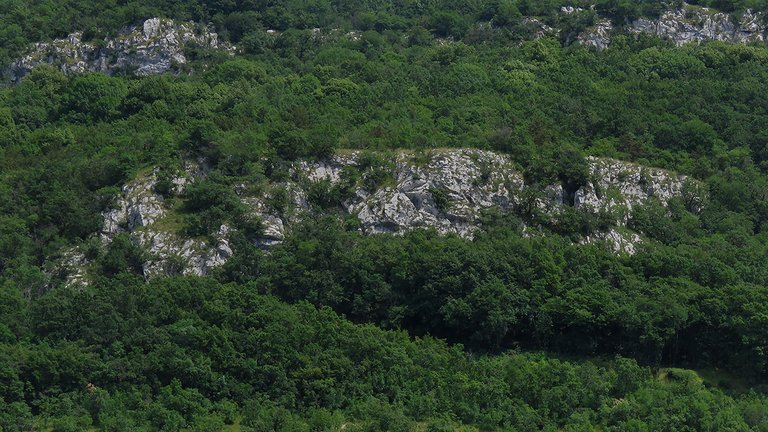
Before finally entering the village of Zazid, I would like to show you three more photographs taken on the roadside place with the lovely white cows. In this one, you can see the rocks on the nearest hill. The following shot ...
... shows a small, winding unpaved road and a bit of the scenery about a hundred meters from my parked car.
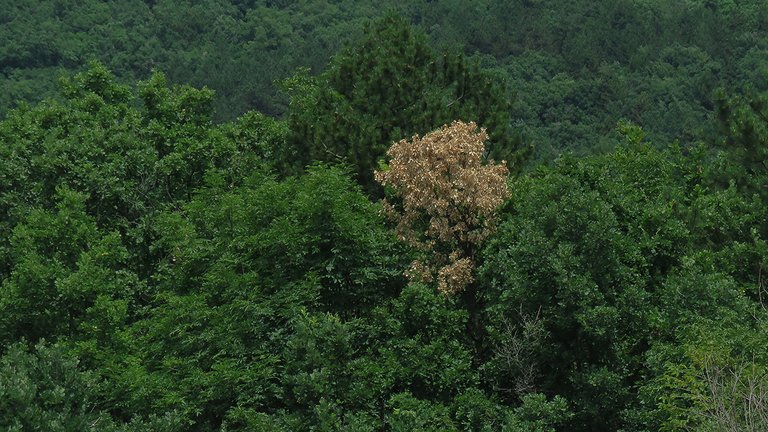
The vegetation in the distance was lush and green. In this photograph, you can see the only brown detail in sight.
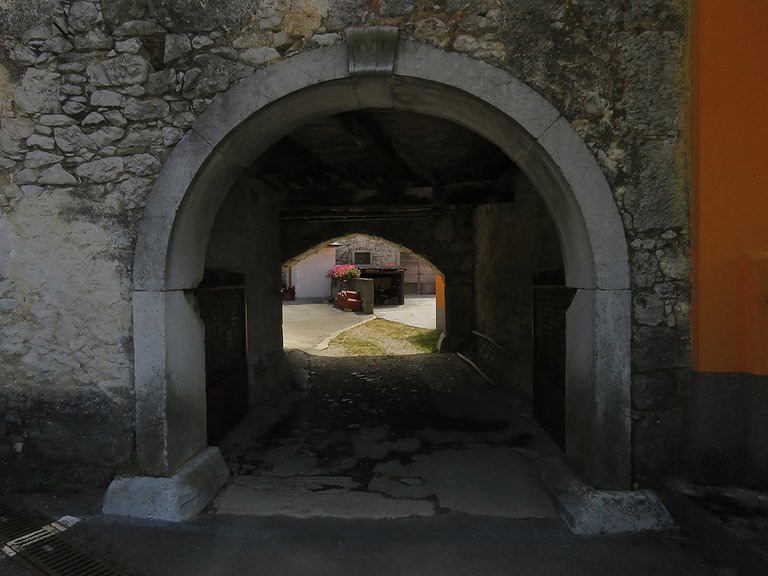
This short passageway that leads to a rounded yard between some old merged houses was photographed in the village. In the following shot ...

... I zoomed in to take a better look at some details on the ceiling of that shady tunnel between two sunny open spaces. After that ...
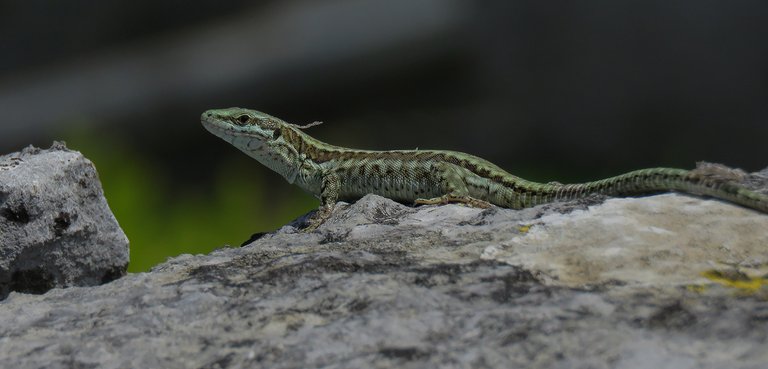
... I photographed a small lizard ...
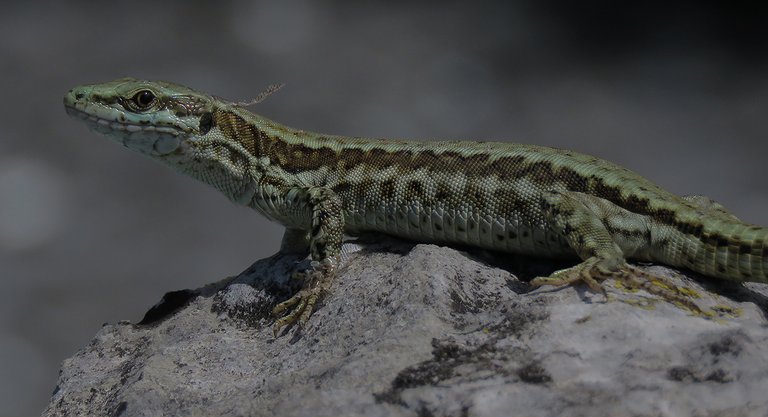
... that was enjoying the sunny weather on the old stony wall not far from there, just across the small square from the passageway.
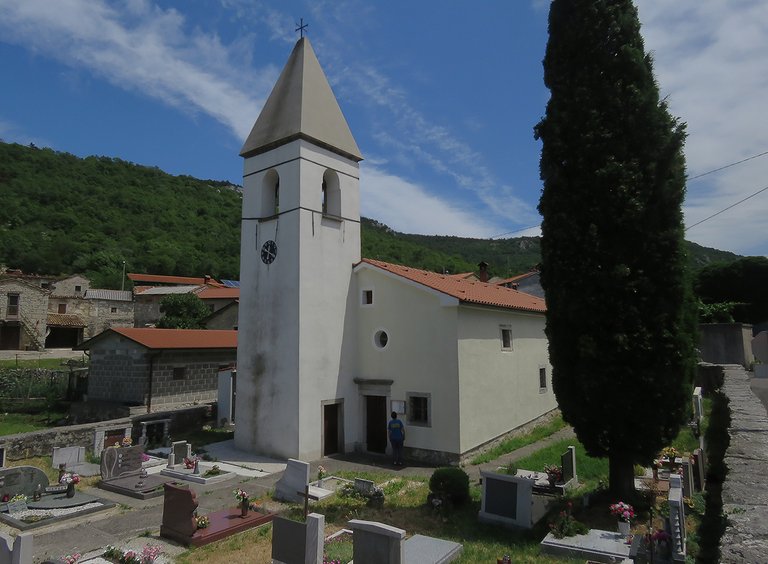
The wall was built around the graveyard and in the middle of the graveyard there is a church. St. Martin's church dates from the end of the 16th or the beginning of the 17th century. The Latin inscription above the portal mentions the year 1697 when the church was probably renovated.
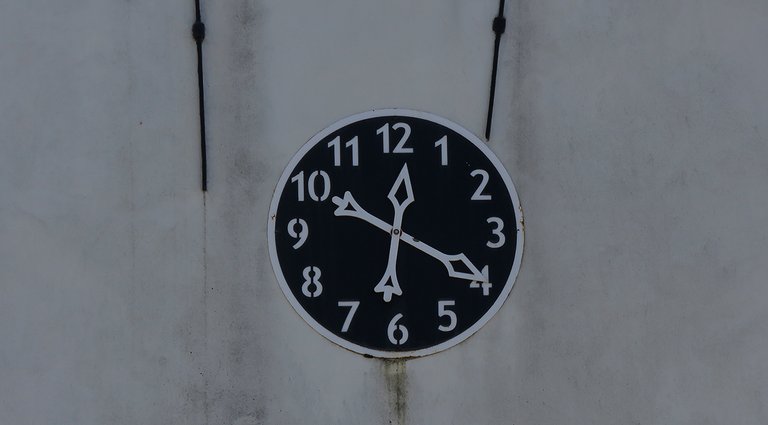
The hands of the relatively new clock on the tower are stuck in the position that shows twenty minutes after noon or midnight. While I was photographing the clock frozen in time ...
... the lizard was watching me from its warm place on the cemetery wall.
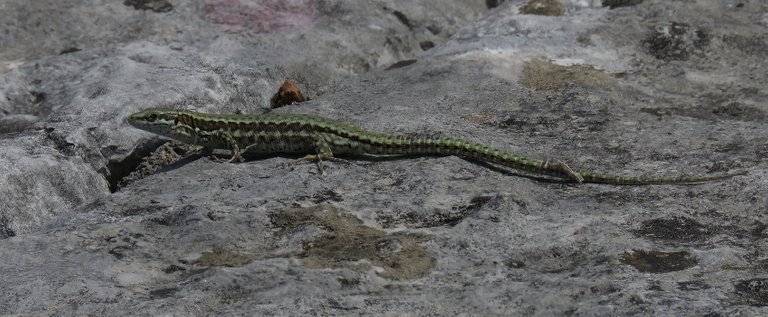
The common wall lizard (Podarcis muralis) is a species that can be found throughout the southern and central parts of Europe but its appearance varies from area to area. On the southern cape of Istra where I live, the skin of these lizards is dark grey with a pattern made of pale yellow spots. Here in the mountains ...
... they have a greenish tinge and the pattern is slightly different.
Some minutes later, while approaching the house shown in this photograph ...
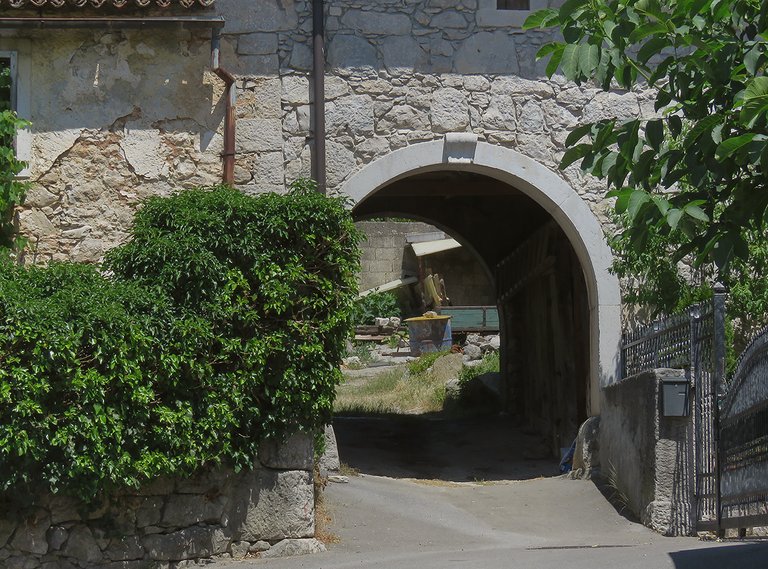
... I came across another passageway.
Here you can see a pile of old stuff displayed in front of one of the houses in that part of the village.
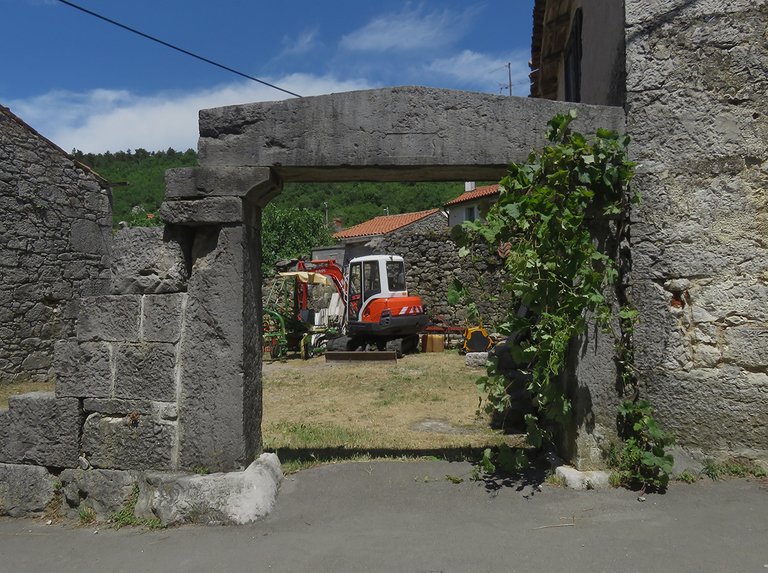
A bit further I photographed a yard with some colorful new machinery.
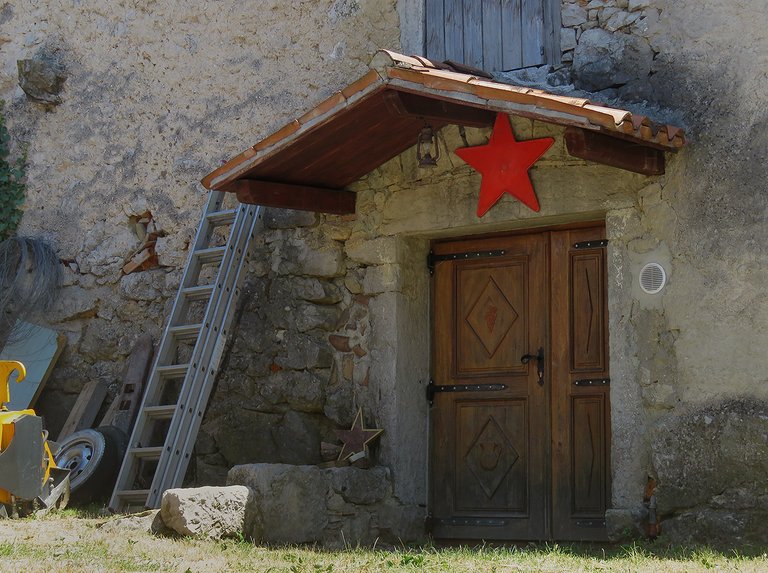
That house had a vivid red star displayed above the entrance.

It was a fairly big star and not a small surprise.
Another property had a highly decorative gnome on its garden wall. The little fella looks like a meditative type. Almost like some kind of Budha from an obscure spiritual fairy tale about the vegan Mrs. Snowhite and the seven little gurus.
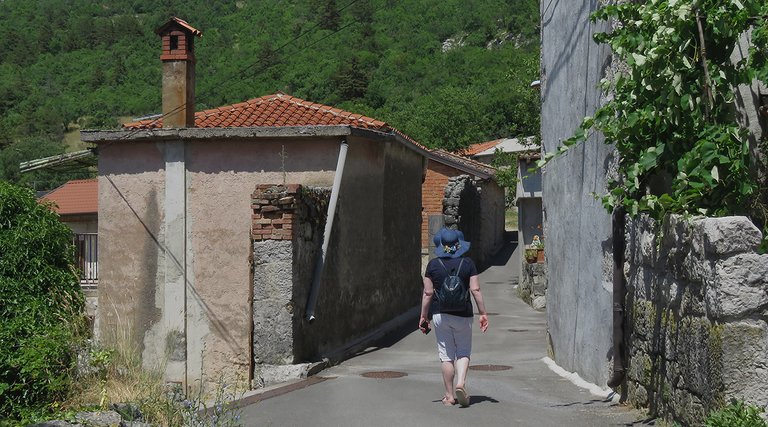
A friend was first to spot the gnome.
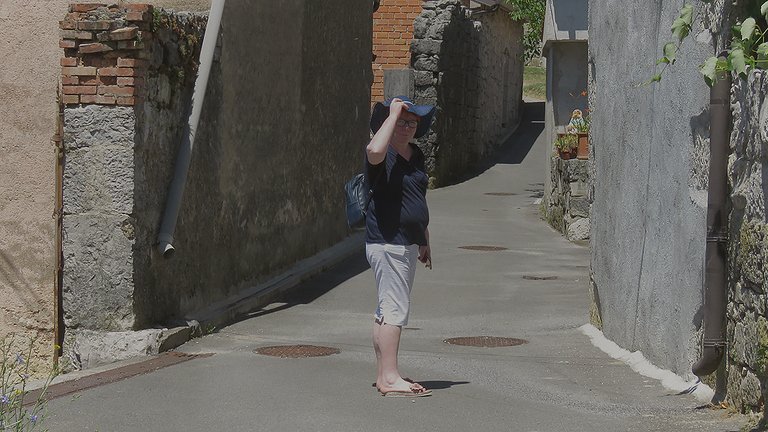
She stopped to think for a moment, and then ...
... she decided to walk toward him.
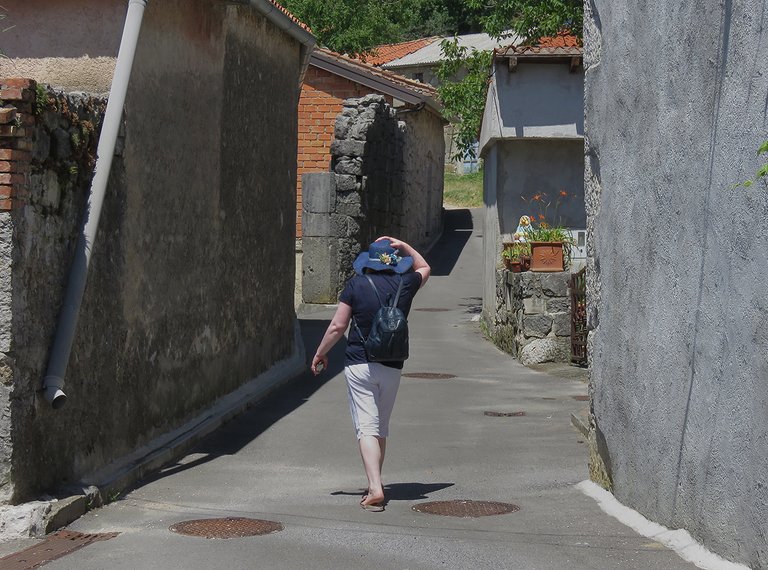
In this shot, you can see her performing a very dramatic walk with an admiring determination.
She is still walking here. The photograph was taken a few seconds later. The determination has cooled down.
In this tryptich, you can see her photographing the garden guru surrounded by succulents and flowers. In the foreground of the following photograph ...

... you can admire some plants that have grown in the spaces between the stones of an old, partially ruined drystone wall.
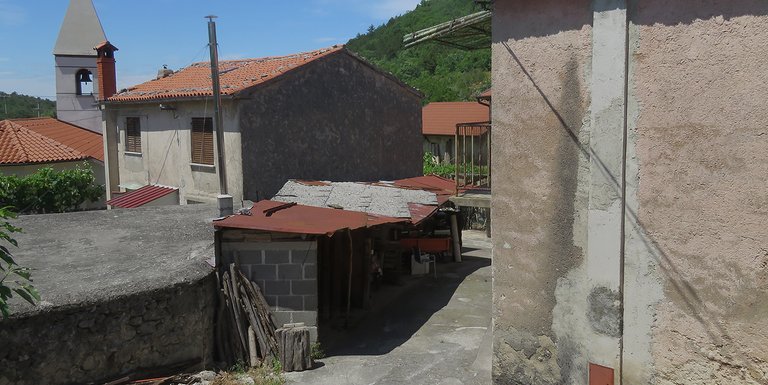
In this and the following shot, you can take a look at another yard ...
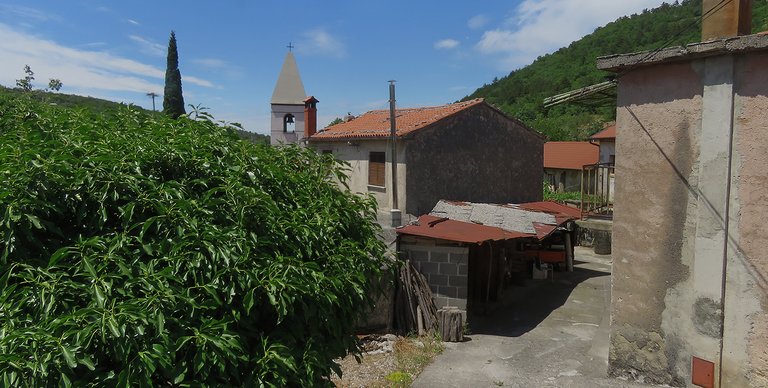
... and some other houses. St. Matin's church tower is present in the background.
Here you can see a traffic mirror, and reflected in it, the road that leads out of the village, toward the place called Rakitovetz.
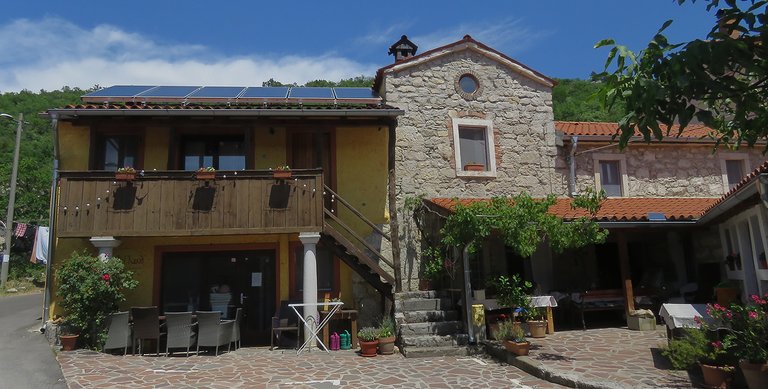
The building shown in this photograph is a hostel. I didn't expect a hostel in such a small village. It was a nice surprise.
Here I zoomed in on some lovely white light bulbs that looked like a line of pearls of the big necklace hanging on the handrail of the terrace. In the following photograph ...
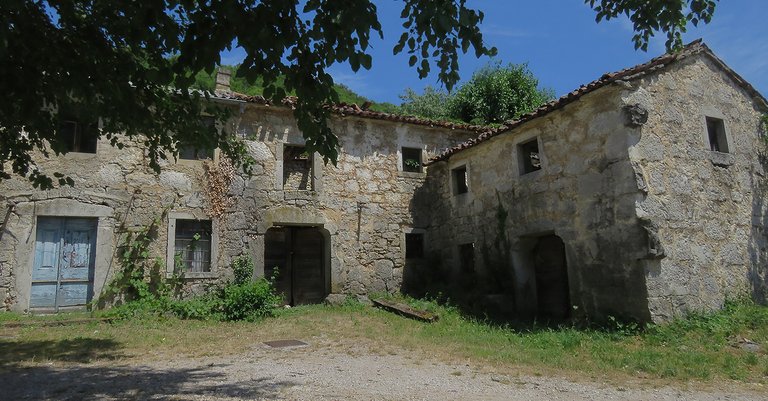
... you can see an old homestead made of two merged stone buildings.
The place looked well-kept but not like a property in which someone currently lives.
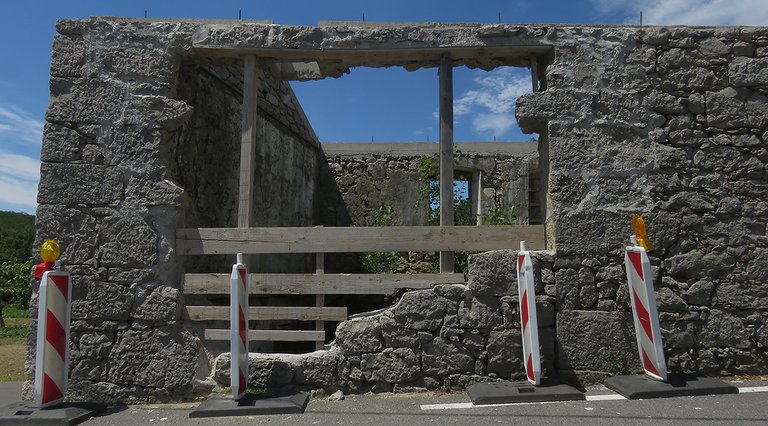
This interesting old building with no roof and a big hole in one of its walls was photographed near the church, just across the street from the graveyard.
Here you can take a look at its empty interior overgrown with lush vegetation.
Judging by the renovation work in progress, the building probably has some historic importance.
Another, much newer house not far from there, was decorated with many colorful flowers.
After a bit of rambling around the outskirts of the village ...
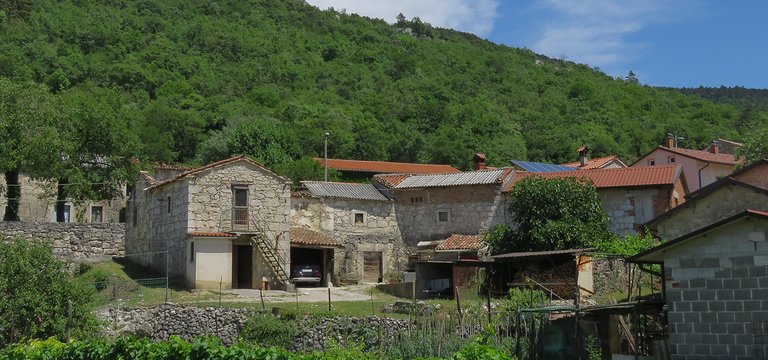
... I reached the place from which I had a different view of some of the houses I saw more up-close earlier.
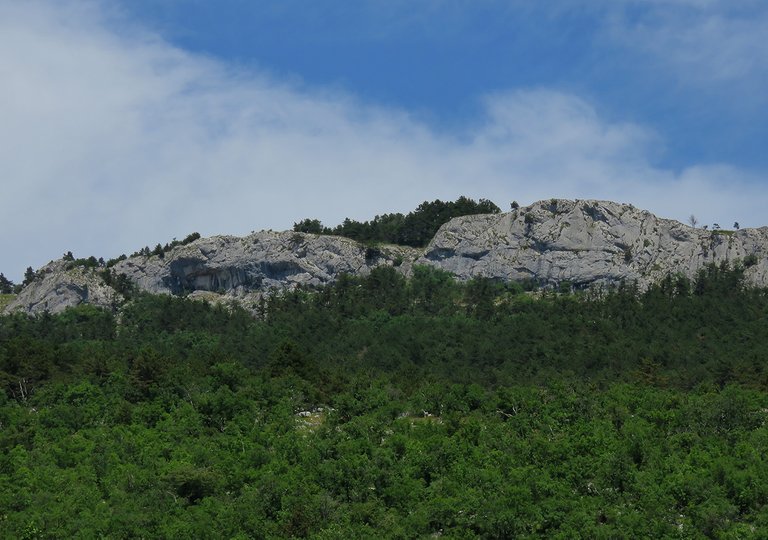
From there I also photographed the rocks on the top of the hill behind the village.
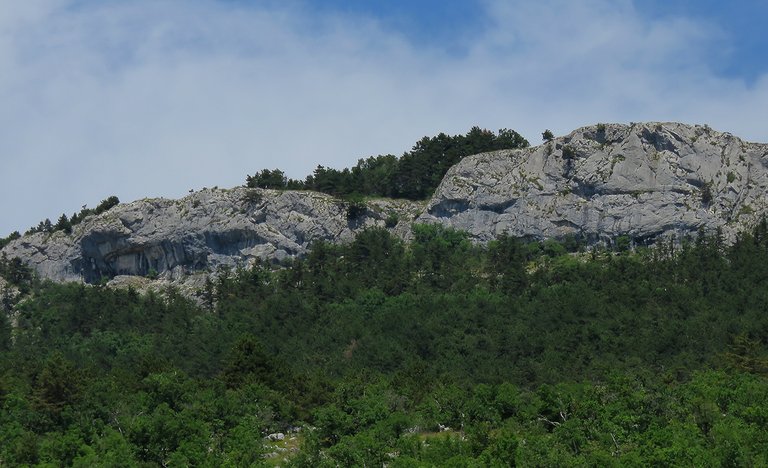
After that ...
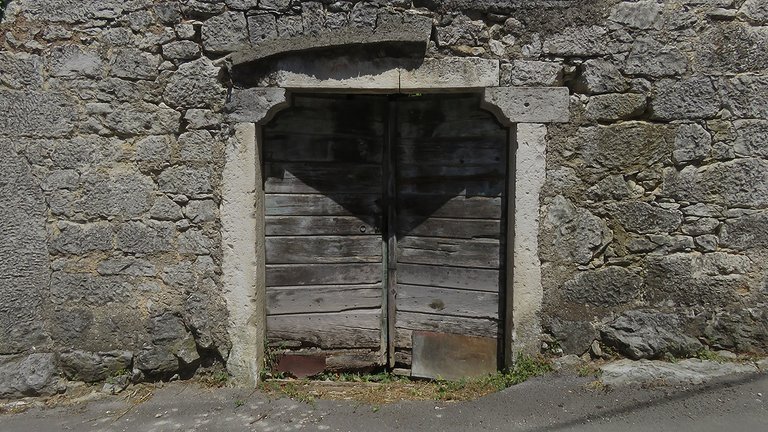
... I walked back to the center of Zazid.
Here you can take a look at an abandoned old house abundantly decorated with ivy.
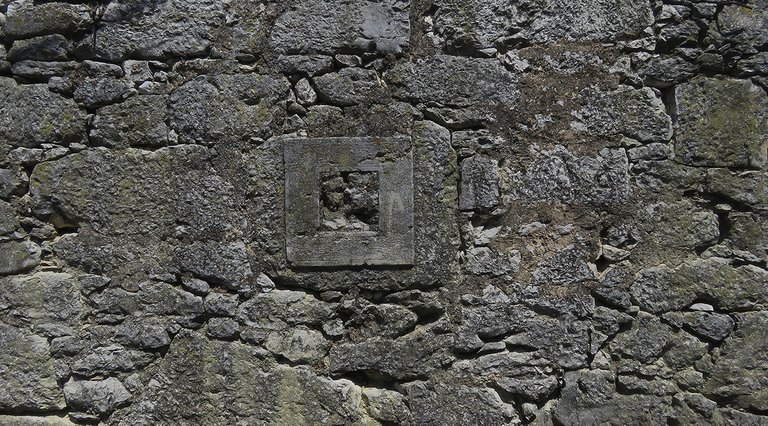
The detail shown in this and the following shot was found ...
... and photographed on the front facade of the neighboring house.
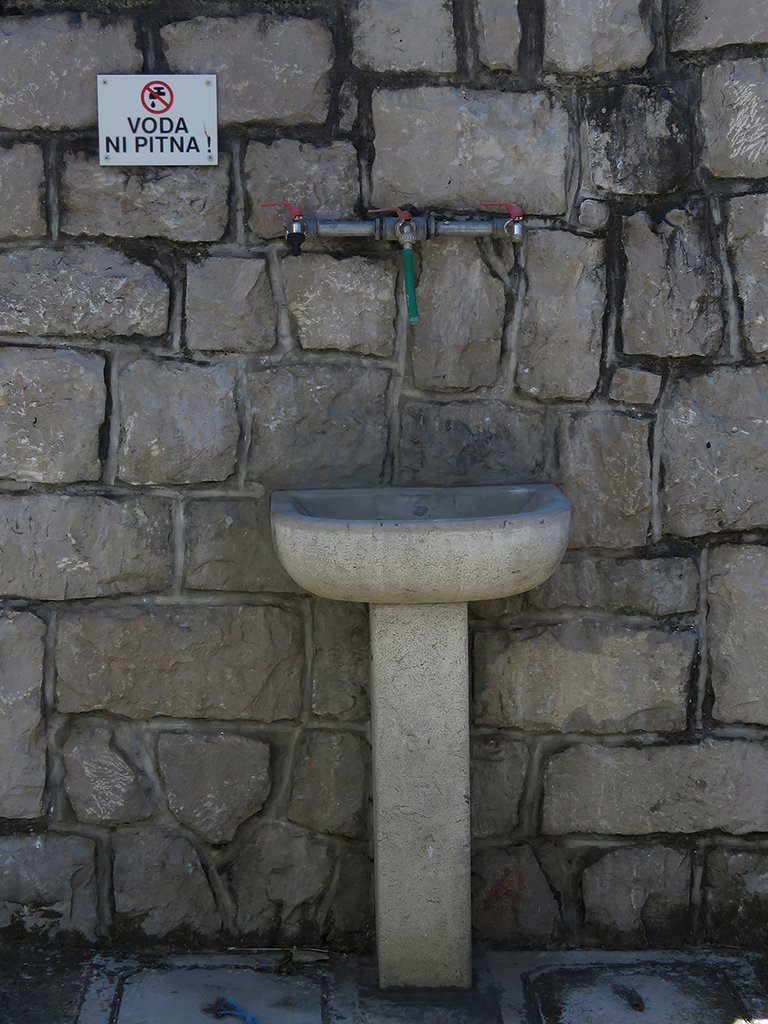
A bit further, on the small crossroad, I came across a public faucet.
The sign above the sink and the taps is signaling that the water isn't potable.
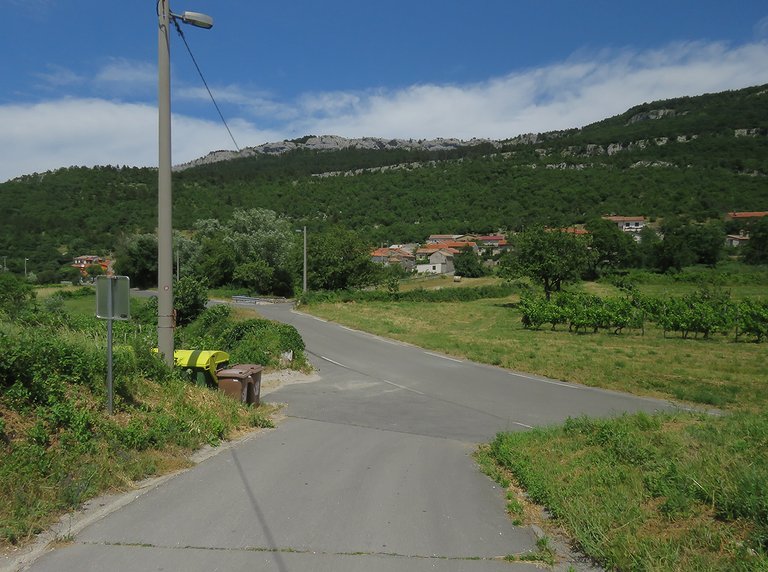
My car was waiting in the parking lot outside the village, two or three hundred meters from the first houses.
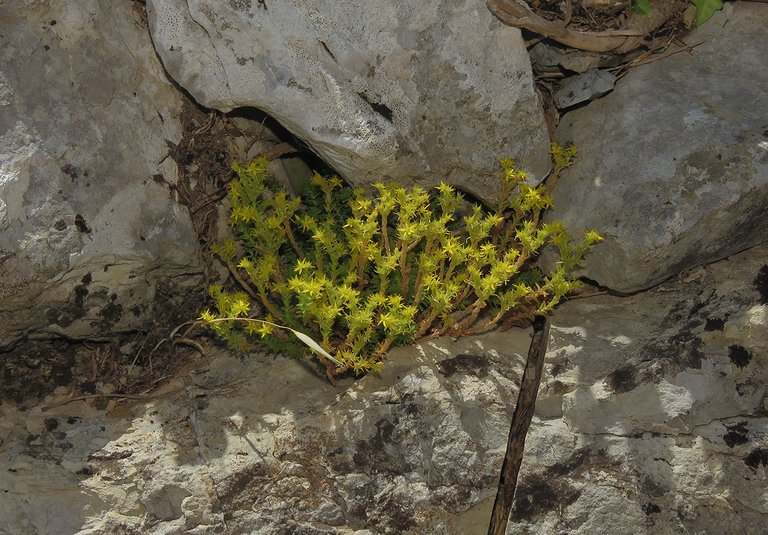
This lovely plant that grows in the narrow spaces between the stones of an old dry stone wall was photographed on the way there. The name of the species is Sedum urvillei.
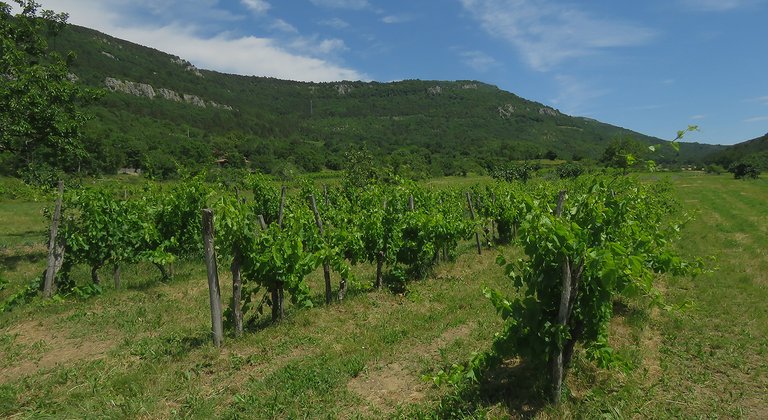
Here you can see the vineyard across the street from the small parking lot, while in the following photograph ...
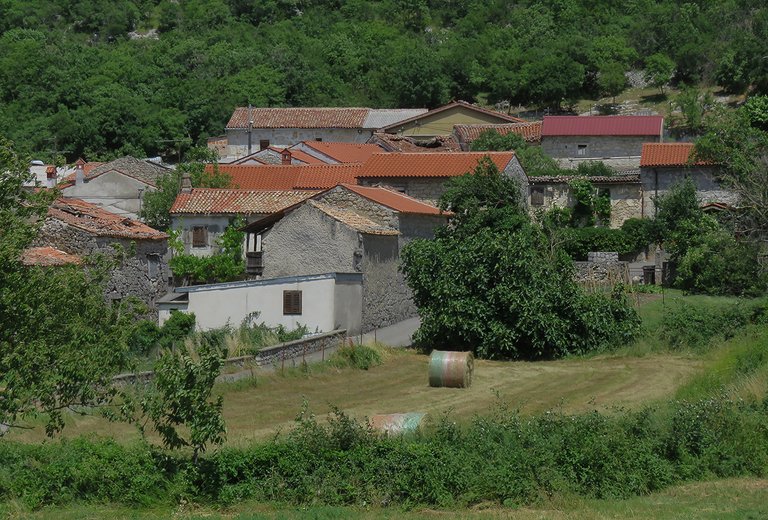
... you can take one last look at the village.
This long line of garbage cans looked almost like a little train from a distance. The bins were parked very close to the parking lot.
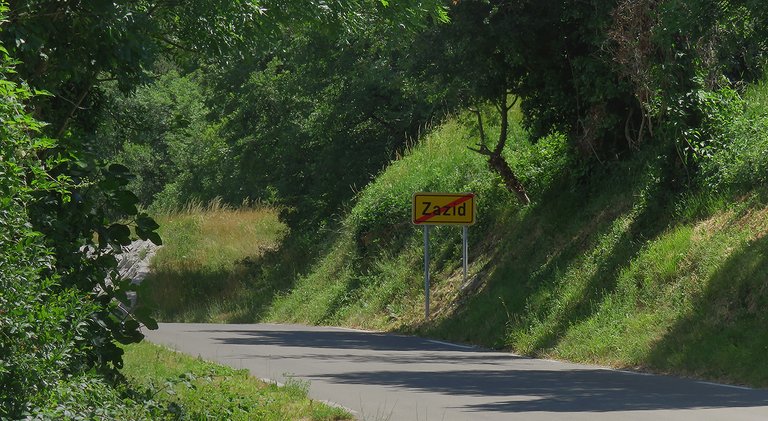
Here you can see the roadsign that signals the Zazid village limits. It's time to drive away and continue the journey.
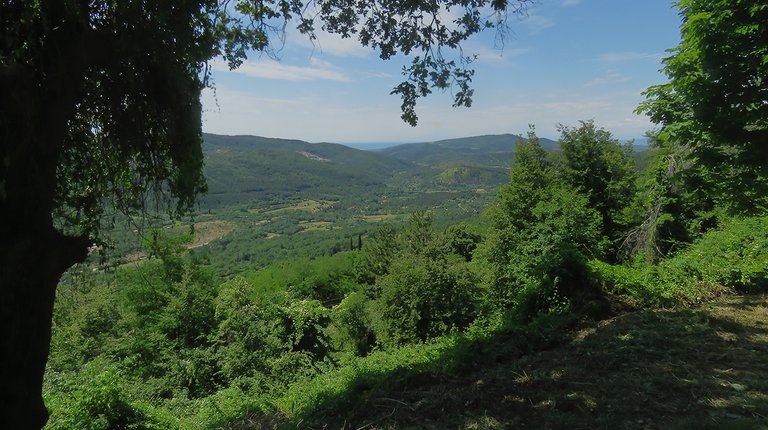
The next stop was a couple of kilometers further ...
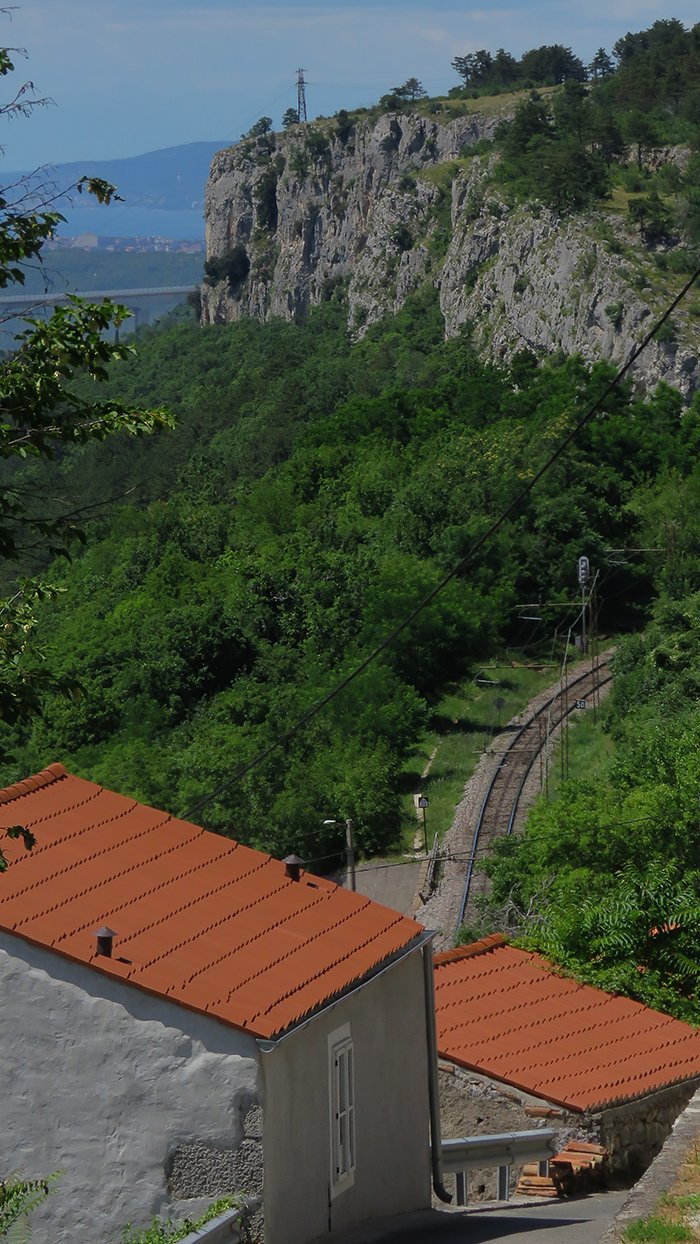
... on the outskirts of the Podpech village.
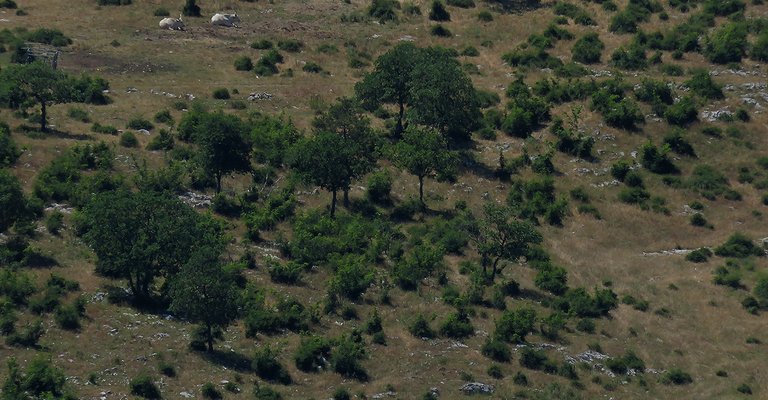
I was on the hill ...
... with a great view of the surrounding scenery ...
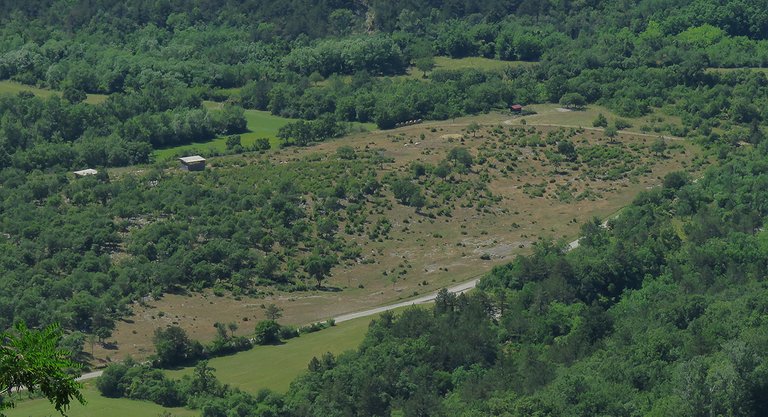
... and I was able to explore the details in the valley below...
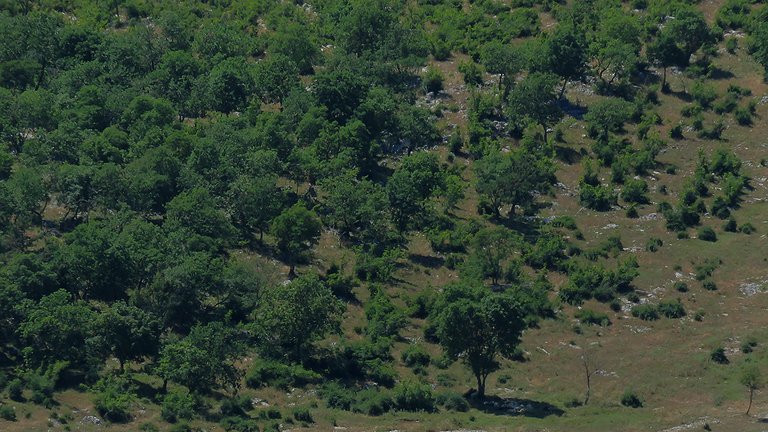
... through the lens of my camera. The zooming capabilities of the Canon PowerShot SX60 HS are very satisfying.

This group of buildings looks like a fairly big farm. In the following photograph ...
... you can also see the surrounding fields and meadows.

Here you can take a look at the tower ...
... on the crest of the hill. The watch tower was built in the 11th century.
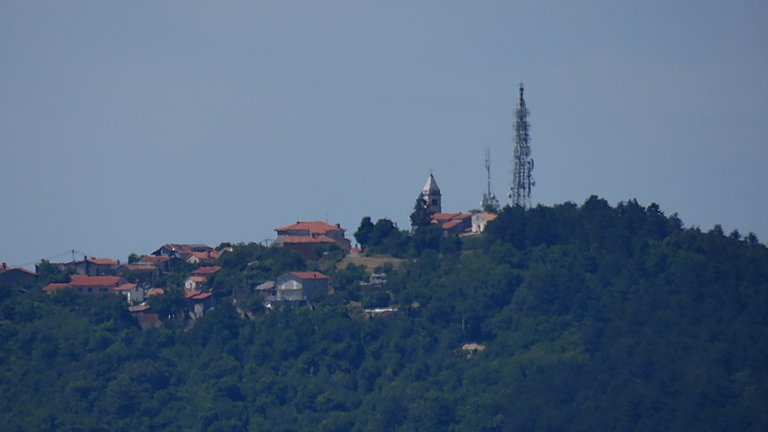
Here you can see a small village on one of the distant hills across the valley. Can't tell you the name of this place.

My car was parked by the side of the road, in the shade of some big trees. Something that looked like a lantern was hanging on the branch of one of those trees.
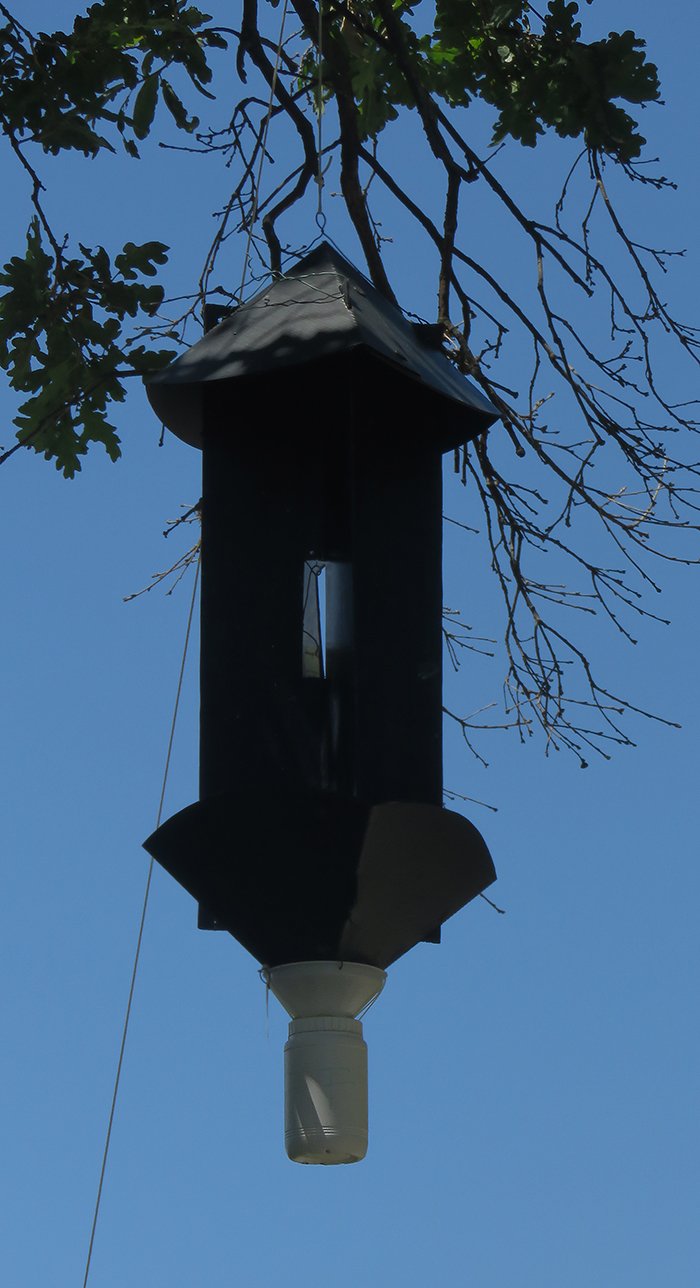
This is an insect trap for bark beetles, wood-boring beetles, and longhorn beetles that can accelerate the deterioration of an old tree. In the following shot ...
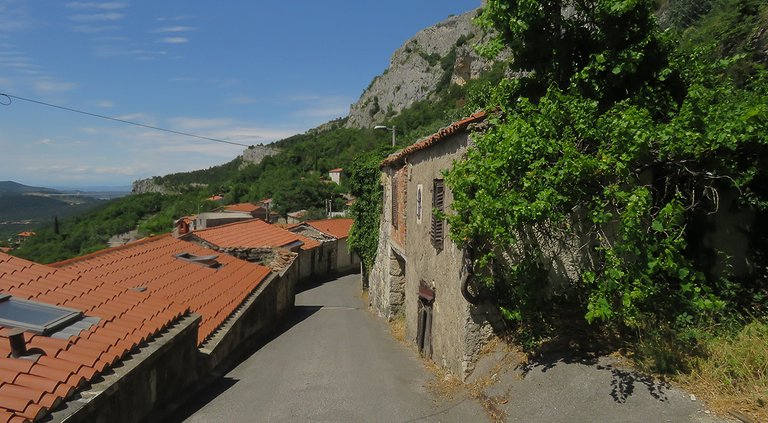
... I'm walking downhill ...

... toward the center of the village shown in this photograph.

There in the center, I saw a small square that looked like a good place to park the car, but ...
... but the road signs were signaling a danger. The text on the sign in the left part of the picture states that parking is allowed at your own risk. The stones could fall from the big rock and make some damage.
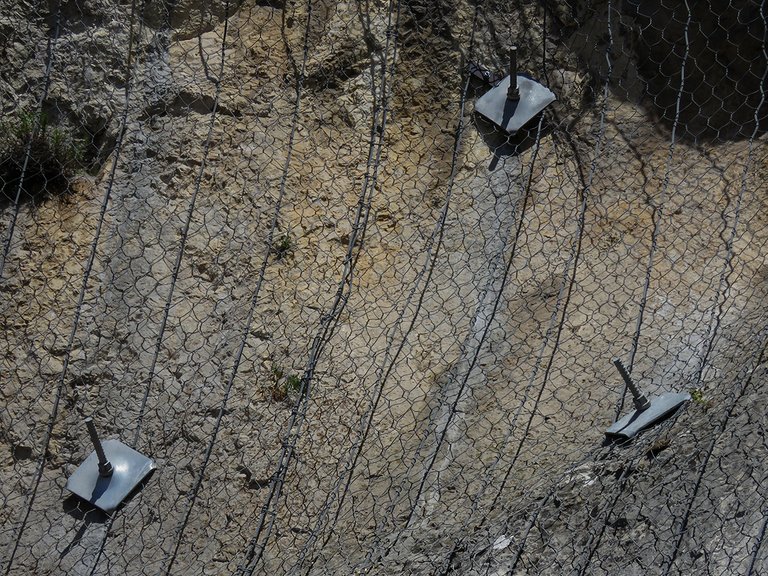
Here you can take a better, more up-close look at the structure that helps prevent erosion-related accidents. In the following photograph ...
... I'm again walking the same road, from the car parked on the outskirts of the village downhill to the center, but this time the focus is on a different house in the foreground of the shot.
Here you can take a better look at that abandoned old ruin with an interesting wooden balcony.

Here you can see another architectural detail found & photographed along the way. A passageway ...
... overgrown with nettle.

Here you can see another empty old ruin, while in the following shot ...
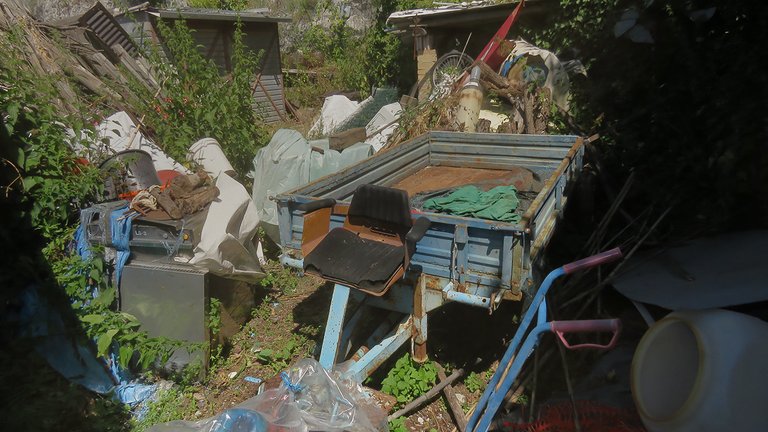
... you can explore an abundance of details accumulated in one of the yards near the center.
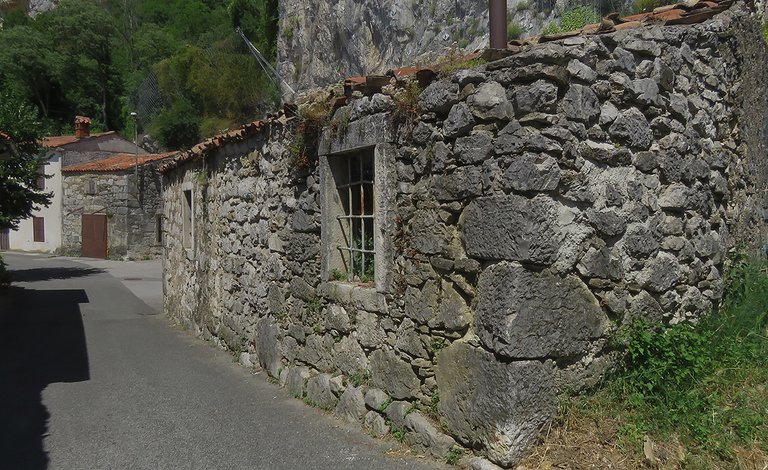
This is yet another old stone building typical for these villages. This one also looks abandoned. Abandoned, but still in good shape. In the following photograph ...

... the focus is on one of its two barred windows.
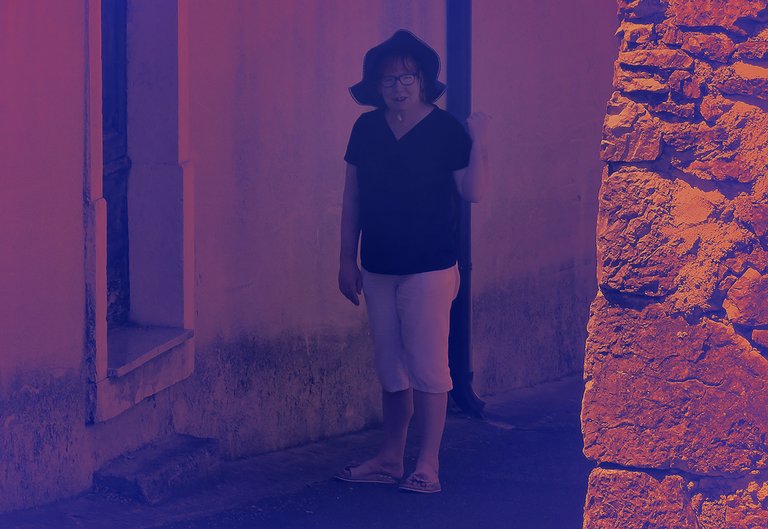
At one point, while preparing the post, I got a bit tired and crazy from that work, so I took one photograph and had a bit of relaxed, aimless fun in Photoshop.

Here you can take a look at the village of Hrastovlje ...
... zoomed through the lens of my camera. After an hour of exploring the center of Podpech, I walked back to the car and drove through the roadside village ...
... to stop near the railroad on the other side.
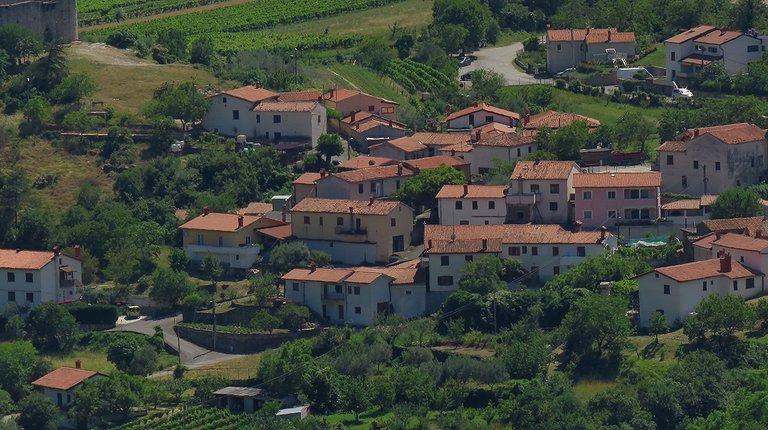
From there I had a good view of the neighboring village of Hrastovlje ...
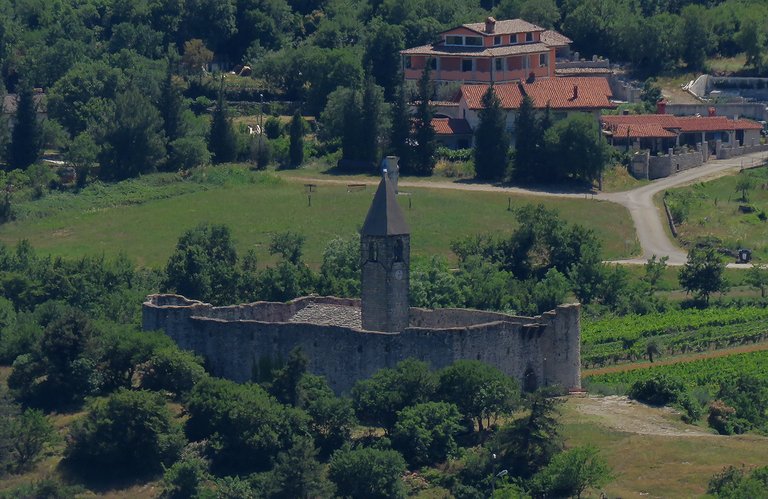
... and its interesting church from the 15th century.
This railroad bridge about a kilometer from Podpech looks pretty old ...
... but I can't tell you when exactly it was built. I like its rugged texture and its design very much.
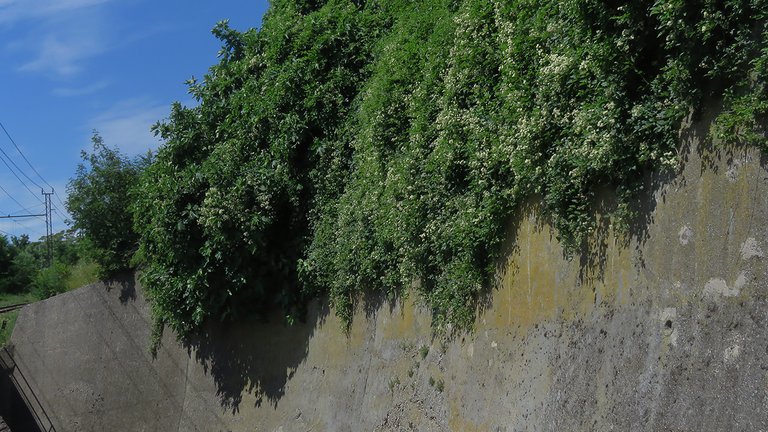
Here you can see the climbing plants on the pretty high concrete wall by the side of the road.

Here I got closer to take a better look at the details that can reveal the species. This is the Clematis vitalba. In the following photograph ...

... the focus is on the shadows.
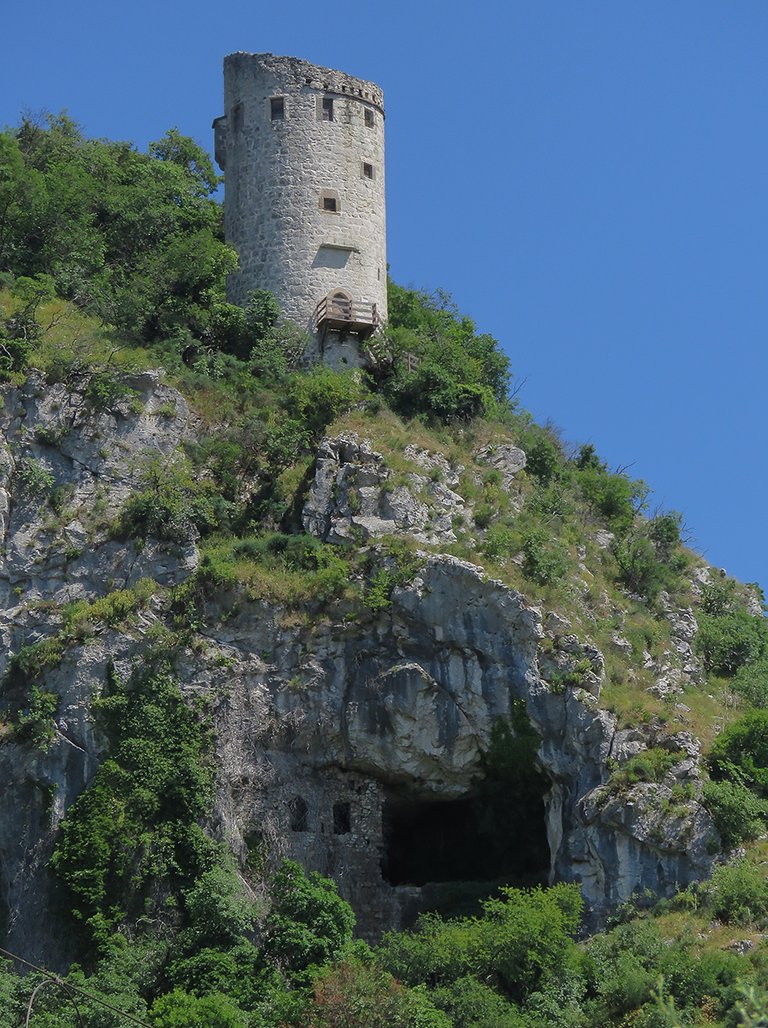
From this place near the railroad, I was able to see the watch tower introduced earlier in the post, from another side. The new angle revealed a cavern in the rock beneath the tower and the remains of the fortification built around that big cavity. I like this medieval architecture incorporated into the surrounding nature very much. It creates an exciting fairy tale atmosphere quite similar to the things I encounter in The Elder Scrolls V: Skyrim - the videogame I'm occasionally playing these days.
Here you can take another look at the scenery down in the valley.
The most iconic feature of the Holy Trinity Church in Hrastovlje is the unusually high protective wall around its yard. The following photograph ...
... was taken from the car. I was driving through Podpech.
It was time to go home.
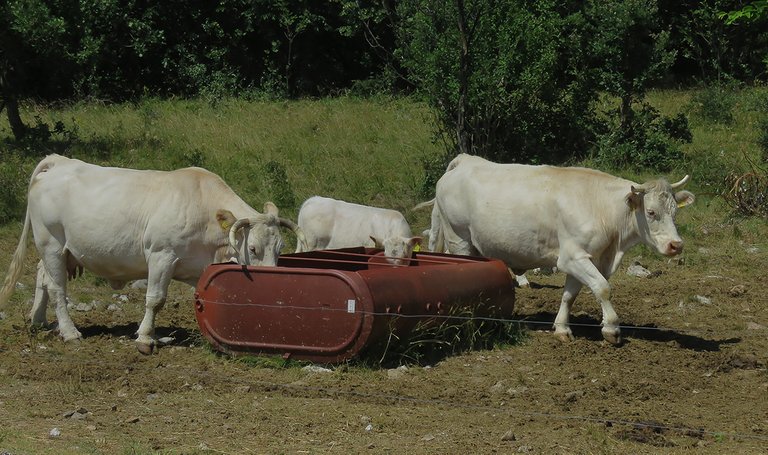
Do you remember the cows introduced at the beginning of the post?

On the way back, I saw them again.
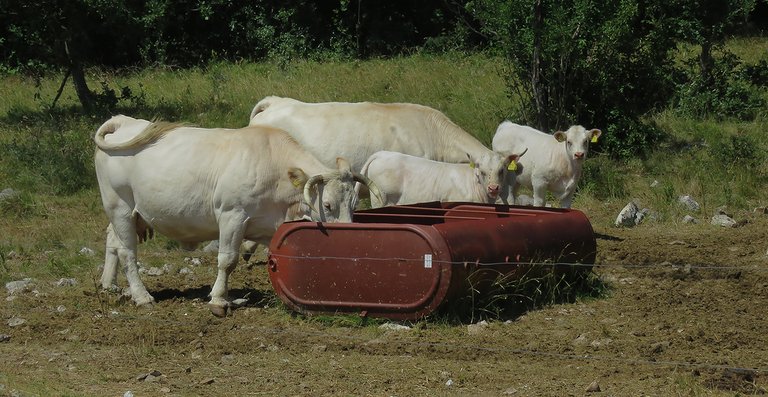
I mean, I don't know if these are the same cows, but you are certainly looking at cows of the same type in this closing set of photographs.
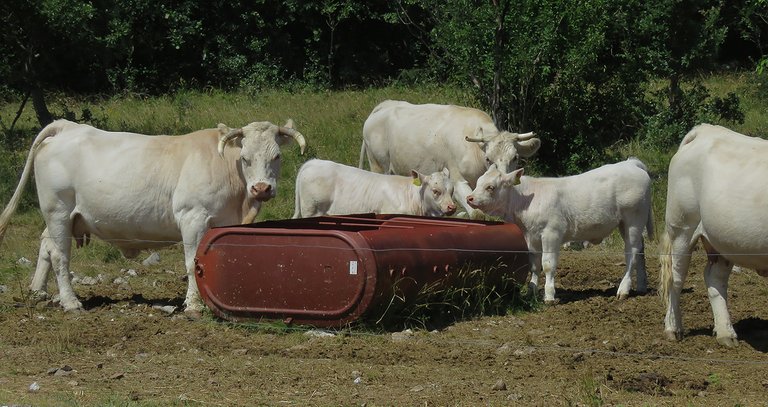
The youngsters were mixed with adults this time.

While driving, I noticed just one cow accompanied by a calf, so I stopped the car in the middle of the road and started following them through the lens of my camera.
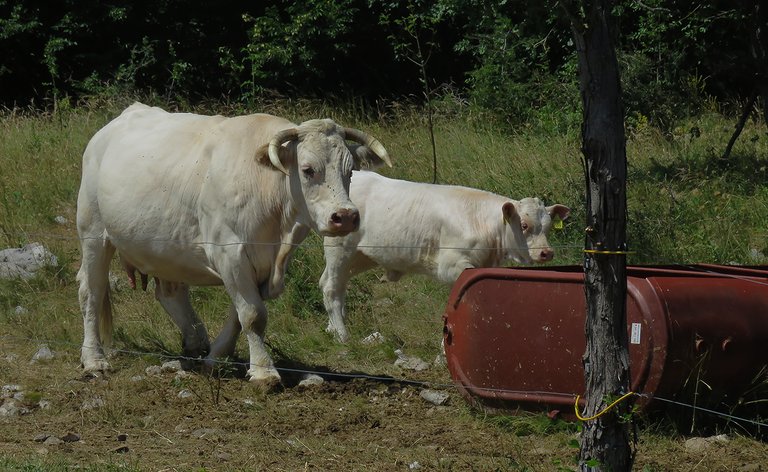
It was a hot early afternoon, the cicadas were very loud, and the cow with the calf was walking toward the watering place by the side of the road.
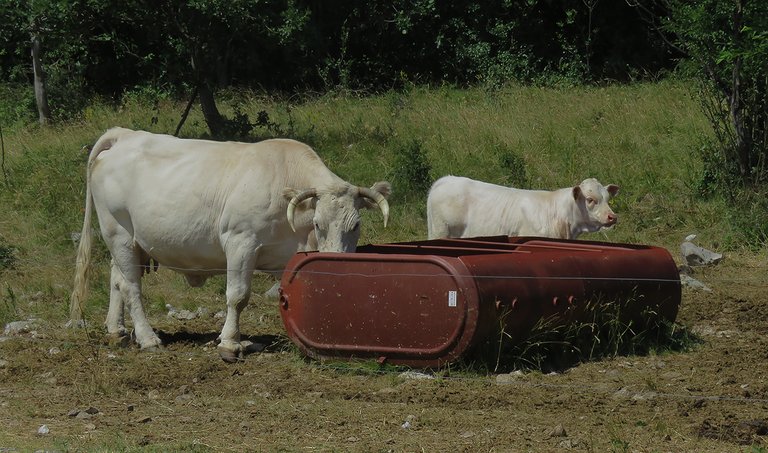
In this shot, you can see them drinking.
Some minutes later more cows came for a drink.
